FIELD GUIDE Animal Directory
BIRDS
With more than 860 species, South Africa supports an exceptionally varied avifauna. The best areas for birding are in the northeast (especially the Kruger National Park, Ndumo Game Reserve and iSimangaliso Wetland Park). Avian diversity is greatest from September to April, when migrants arrive and residents shed their drab plumage to emerge in brilliant breeding colours.
TAXONOMY
A considerable body of genetic and fossil evidence has helped establish that birds are most properly placed with crocodiles as the only living members of the Archosauria, a group that also includes the extinct dinosaurs.
FIELD GUIDE Animal Directory
Marabou Stork (LC)
Species Leptoptilos crumeniferus Relatives Saddle-Billed Stork, Yellow-Billed Stork, Open-Billed Stork
An ungainly omnivore standing 1.5 m (5 ft) tall, the marabou is identified by its inflatable neck pouch. It may be seen near water, alongside vultures at a kill, or in urban environments. Its South African range is largely confined to the Kruger National Park and surrounds.
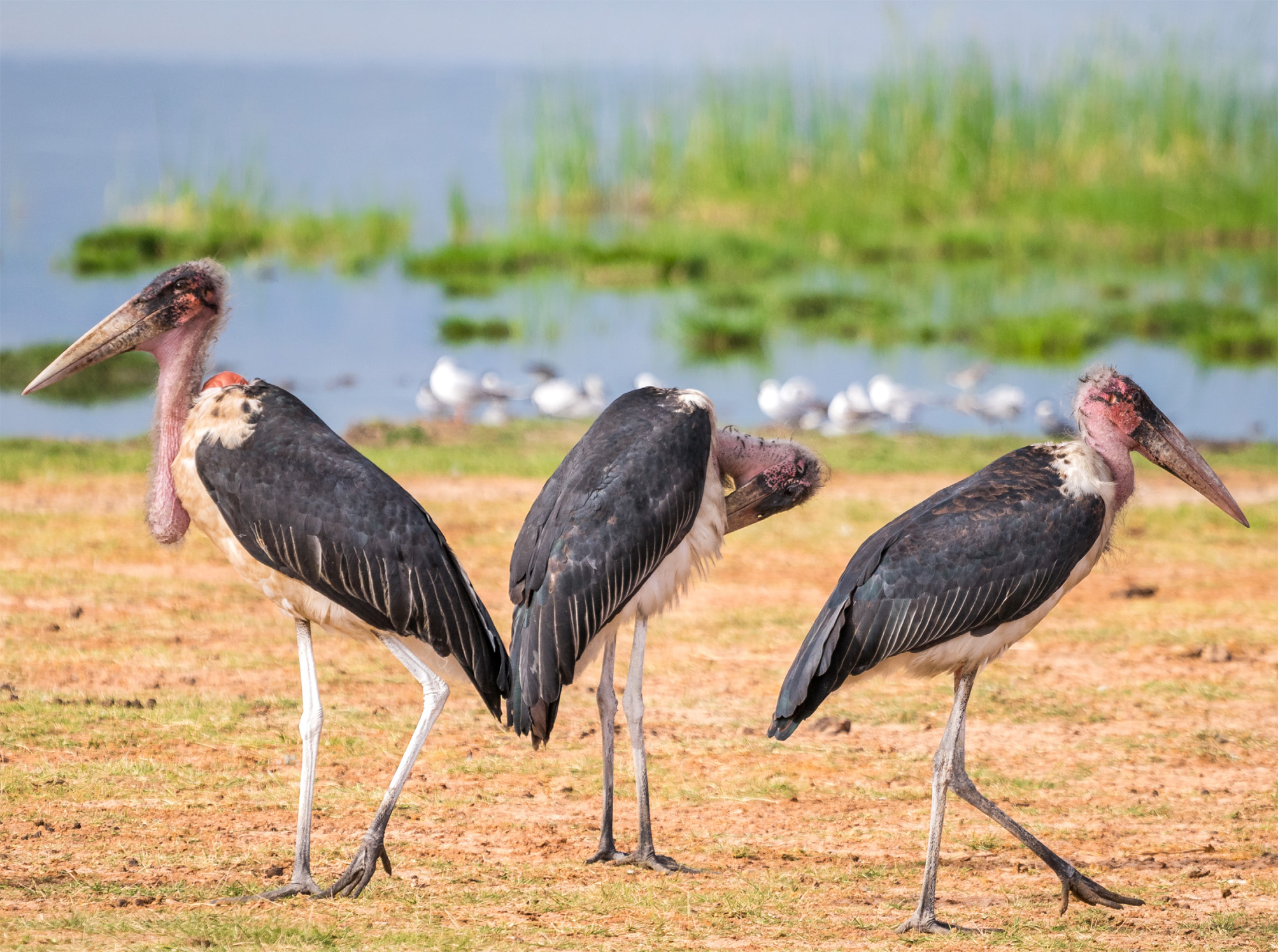
FIELD GUIDE Animal Directory
Egyptian Goose (LC)
Species Alopochen aegyptiacus Relatives Spur-Winged Goose, Yellow-Billed Duck, White-Faced Whistling Duck
South Africa supports 19 species of resident and migrant waterfowl. The most conspicuous is the Egyptian goose – a large reddish-brown bird that is perpetually honking. Waterfowl populations tend to increase in the European winter, when the Palaearctic migrants arrive.

FIELD GUIDE Animal Directory
Hadada Ibis (LC)
Species Bostrychia hagedash Relatives Sacred Ibis, Glossy Ibis, Southern Bald Ibis
A bird of hotel gardens and grassy wetlands, the hadada is best known for its onomatopoeic cackle. It is a robustly built bird that uses its long, decurved bill to probe for snails and other invertebrates. Also common is the sacred ibis, which was revered in ancient Egypt.
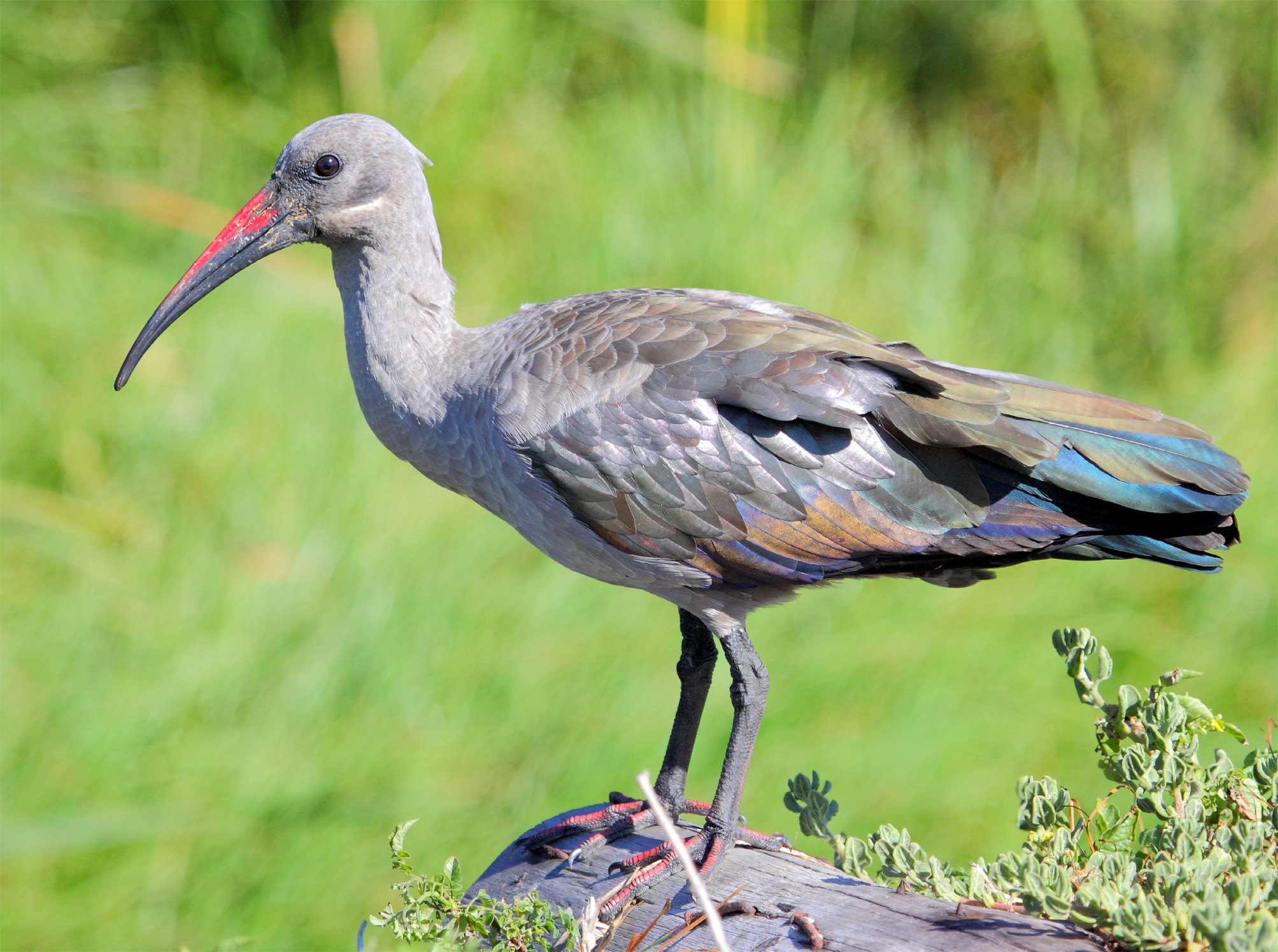
FIELD GUIDE Animal Directory
African Darter (LC)
Species Anhinga rufa Relatives White-Breasted Cormorant, Long-Tailed Cormorant
Frequently seen perching on bare branches overhanging rivers and lakes, the African darter or snakebird looks like a distended cormorant, with a kinked serpentine neck almost as long as its torso and striking russet patches that glow off-gold in the right light.

FIELD GUIDE Animal Directory
Great White Pelican (LC)
Species Pelecanus onocrotalus Relatives Pink-Backed Pelican
Easily recognized by their enormous wingspan and larder-like bills, South Africa’s two pelican species are its largest water-associated birds. Most common is the great white pelican, an almost all-white bird with a large yellow pouch hanging from its long bill and black underwings that are clearly visible in flight.
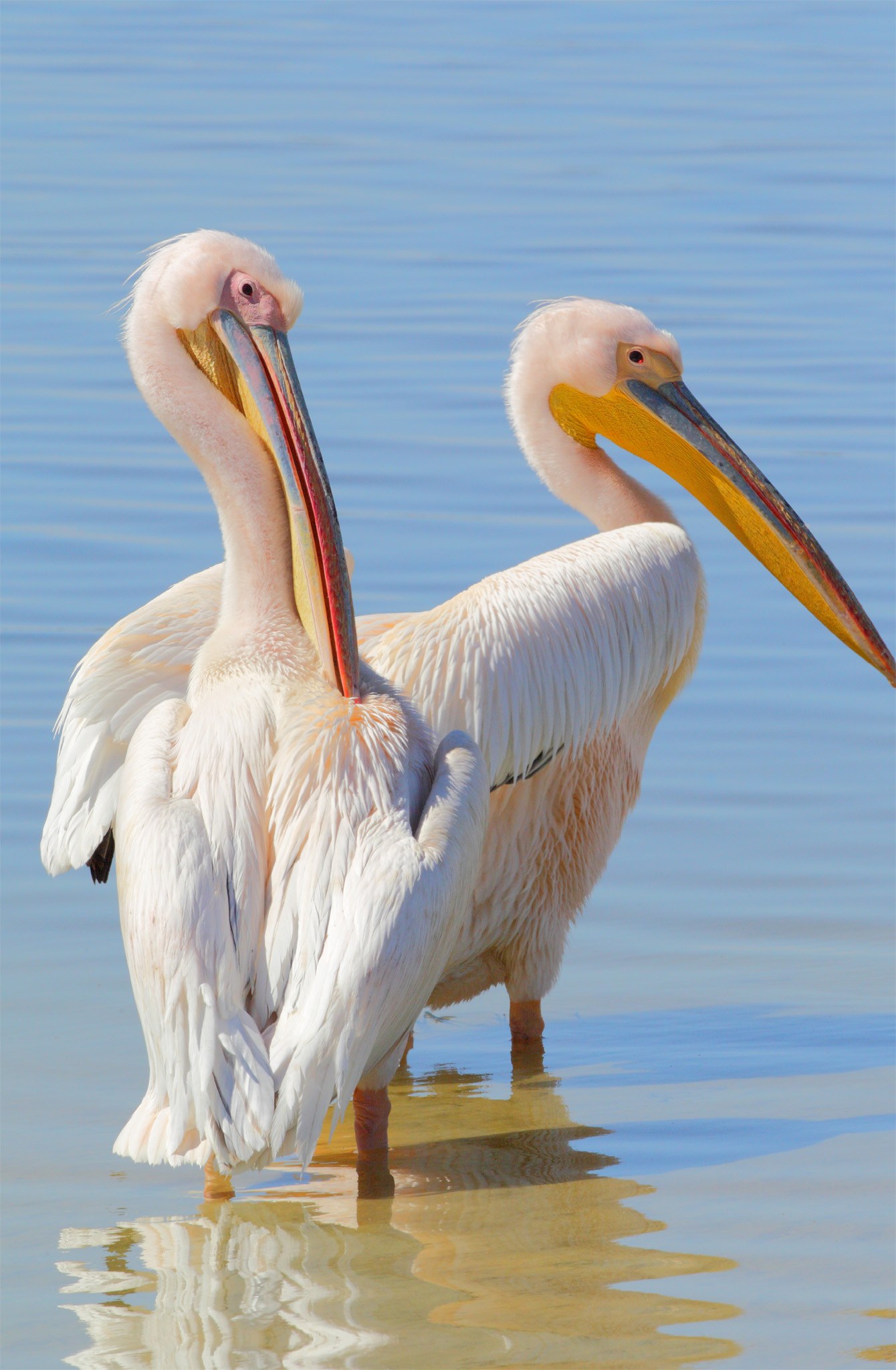
FIELD GUIDE Animal Directory
Goliath Heron (LC)
Species Ardea goliath Relatives Grey Heron, Black-Headed Heron, Great White Egret, Cattle Egret
Tall and long-necked, herons use their sharp, elongated bills to spear fish, frogs and other prey. The goliath heron stands up to 1.5 m (5 ft) tall and is commonest in the north and east. More prevalent, however, are the familiar Eurasian grey heron and black-headed heron.
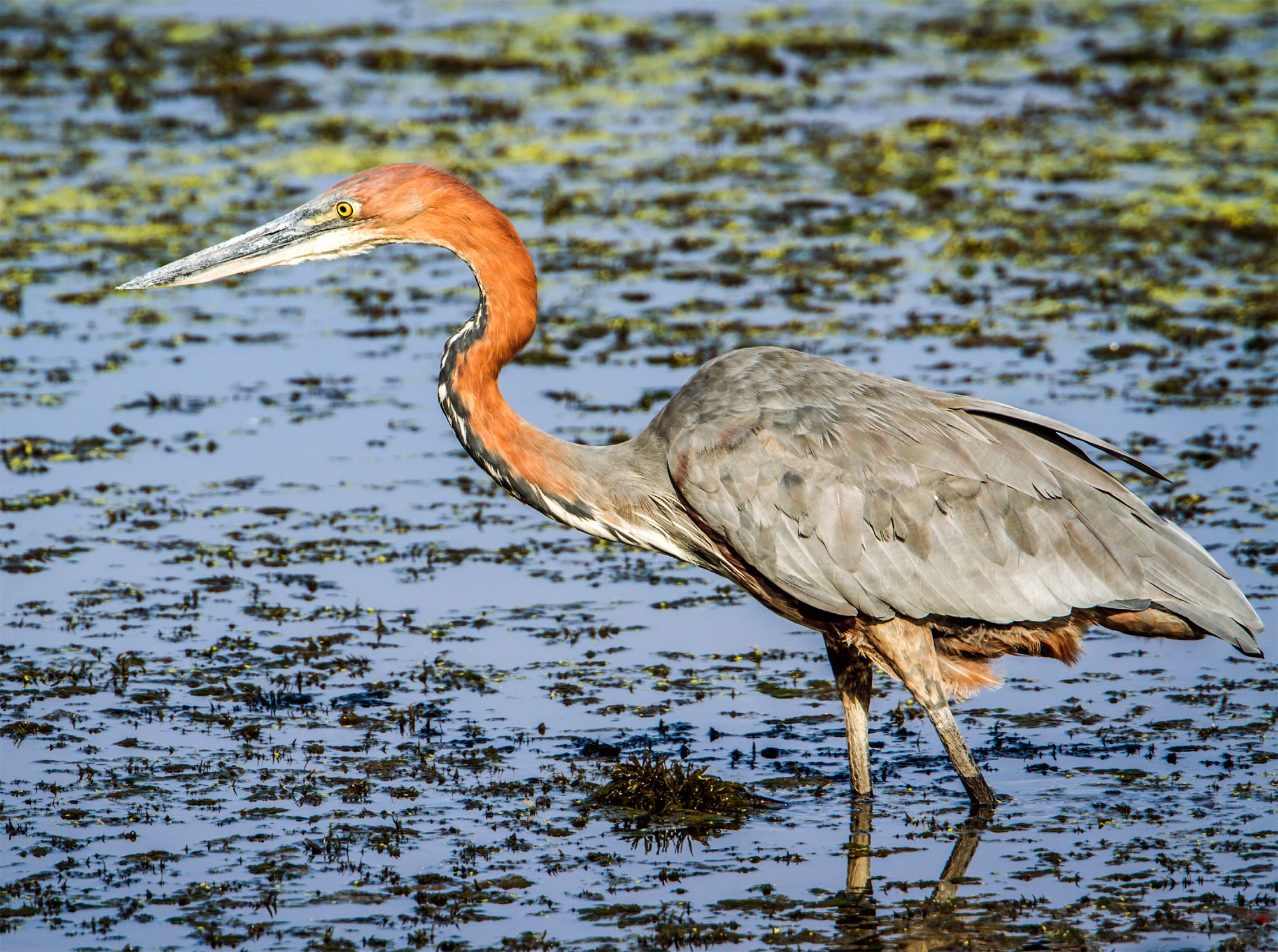
FIELD GUIDE Animal Directory
Greater Flamingo (LC)
Species Phoenicopterus roseus Relatives Lesser Flamingo
Associated with flat, shallow pans, flamingoes are pink-tinged birds that feed on algae and microscopic fauna, which are sifted through filters in their down-turned bills. The greater flamingo is the larger of the two species in South Africa, but it is outnumbered by the lesser flamingo, which is much pinker.
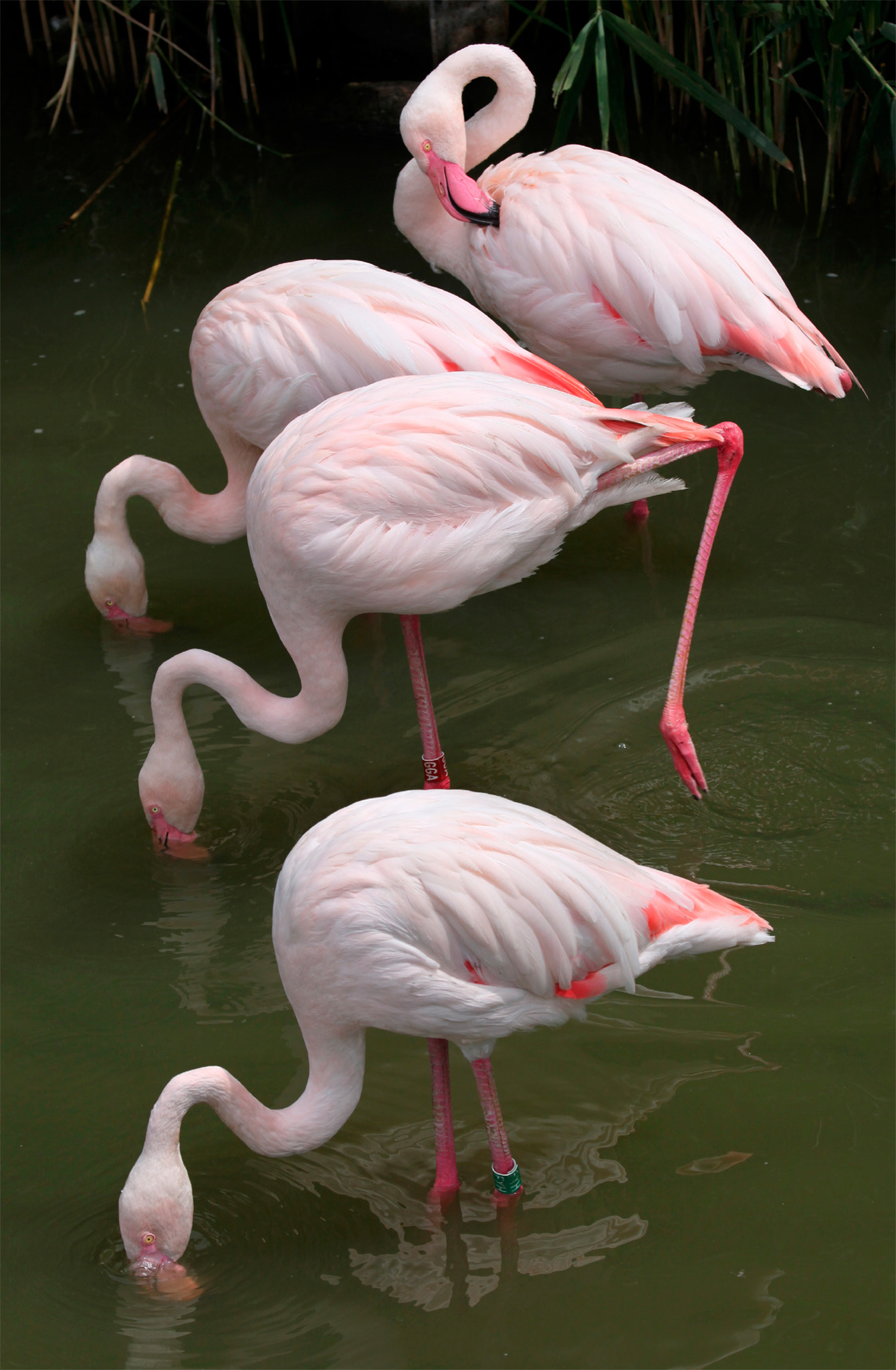
FIELD GUIDE Animal Directory
Blue Crane (LC)
Species Anthropoides paradisea Relatives Grey Crowned Crane, Wattled Crane
South Africa’s national bird stands up to 1.2 m (4 ft) tall and has a silvery-blue plumage broken only by its white forehead and black tail plumes. This near-endemic, with a declining population currently estimated at 17,000, is most often seen in the uKhahlamba-Drakensberg foothills.
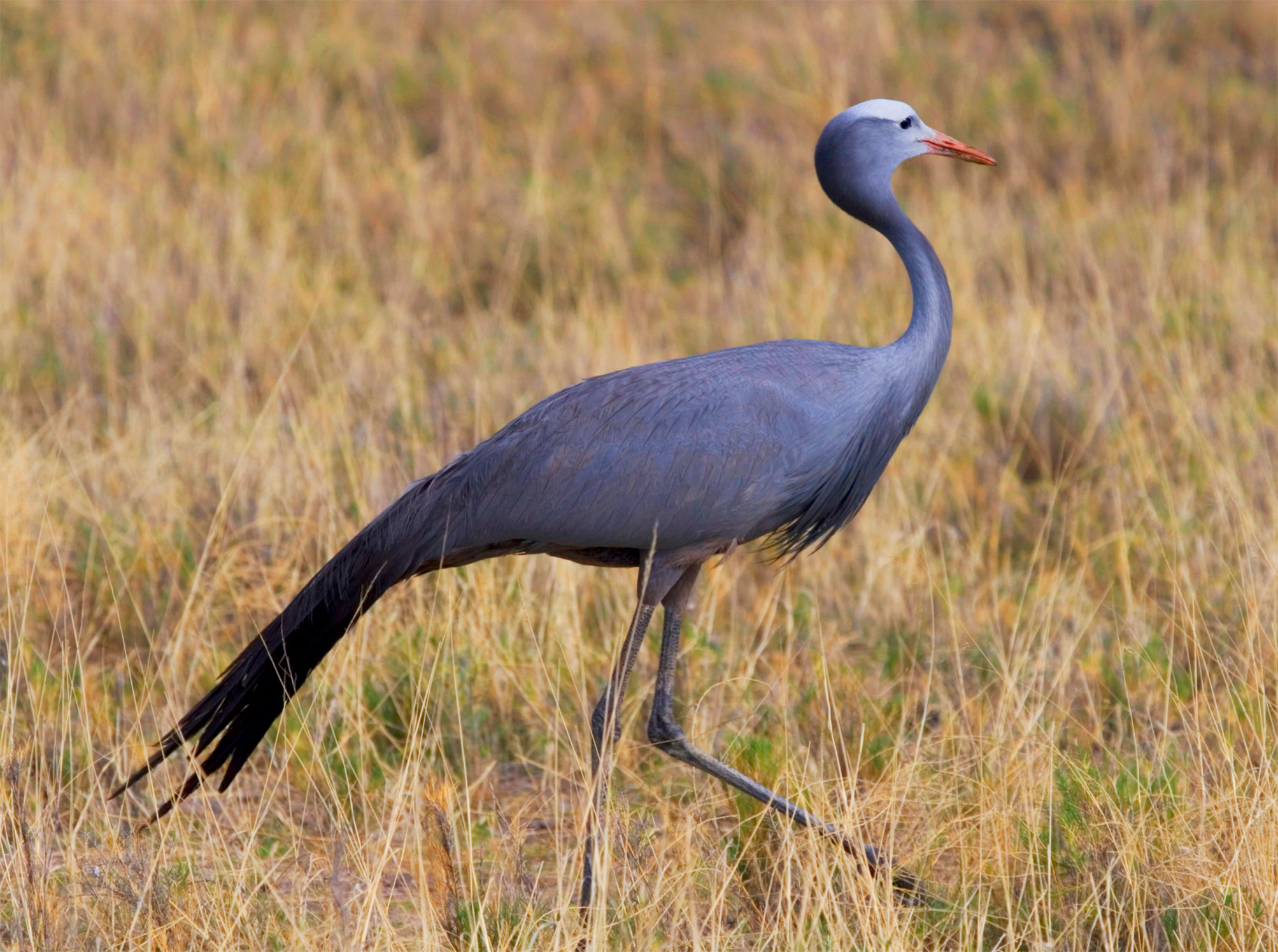
FIELD GUIDE Animal Directory
Lappet-Faced Vulture (EN)
Species Torgos tracheliotos Relatives White-Backed Vulture, Hooded Vulture, Cape Vulture
Africa’s largest raptor has a bald pink head, a massive blue-and-ivory bill and black wings that spread open like a cape. It often shares kills with the region’s five other carrion-eating vulture species. Capable of soaring on thermals for hours on end, this vulture ranks among the world’s most powerful fliers and its vision is practically unmatched in the animal kingdom. It is also unexpectedly fastidious and will spend hours preening itself after feeding.
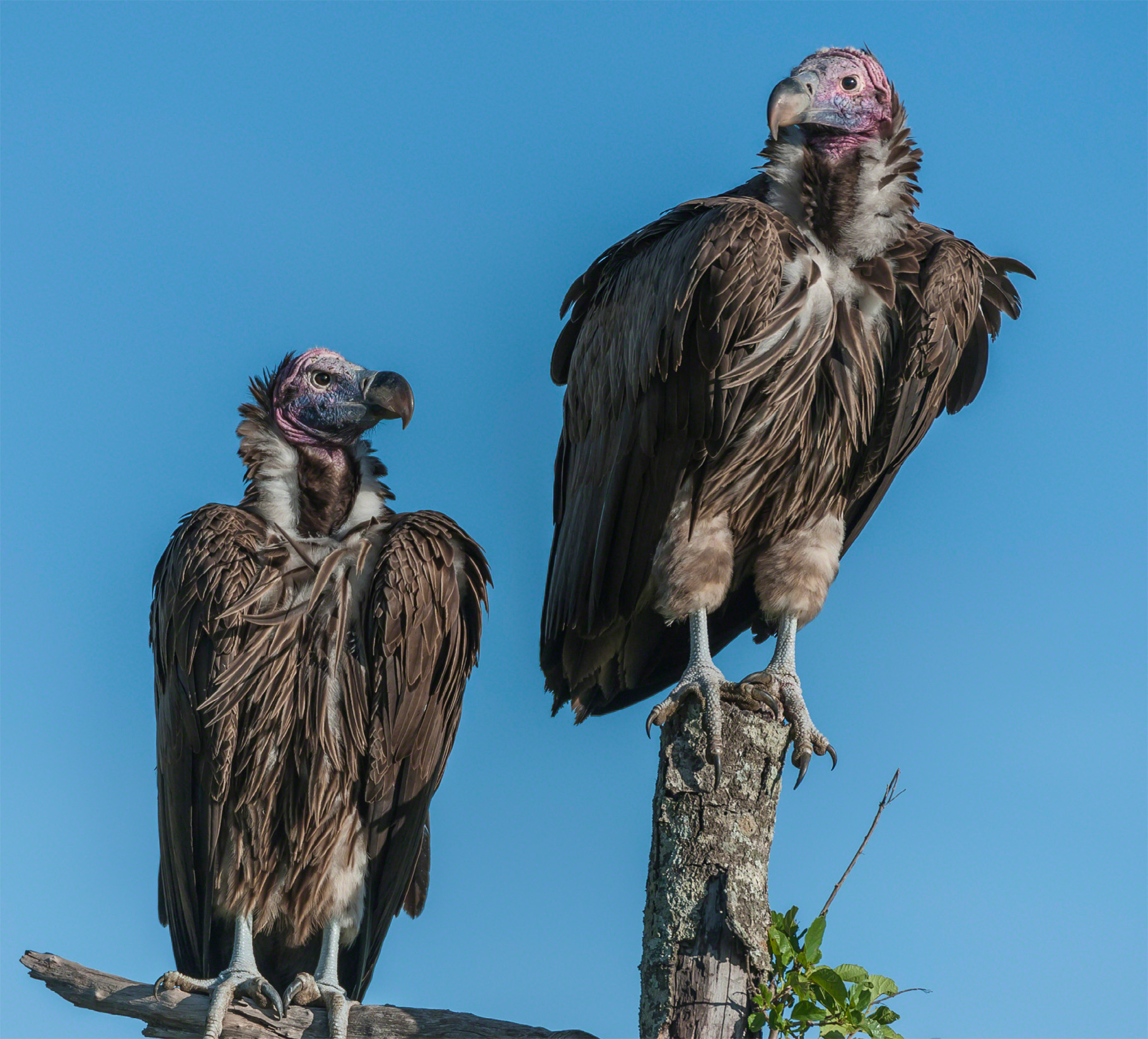
FIELD GUIDE Animal Directory
African Fish Eagle (LC)
Species Haliaeetus vocifer Relatives Martial Eagle, Bateleur, Verreaux’s Eagle
Among the most evocative sounds of the bush is the call of two African fish eagles, a piercing wail delivered in duet. This monogamous eagle is visually striking, with a hooked yellow bill and black-and-white feathering against a rich chestnut belly. It is a resident of rivers and lakes, perching high in the branches of tall fringing trees, or soaring above the water, sweeping down occasionally to scoop a fish into its talons.
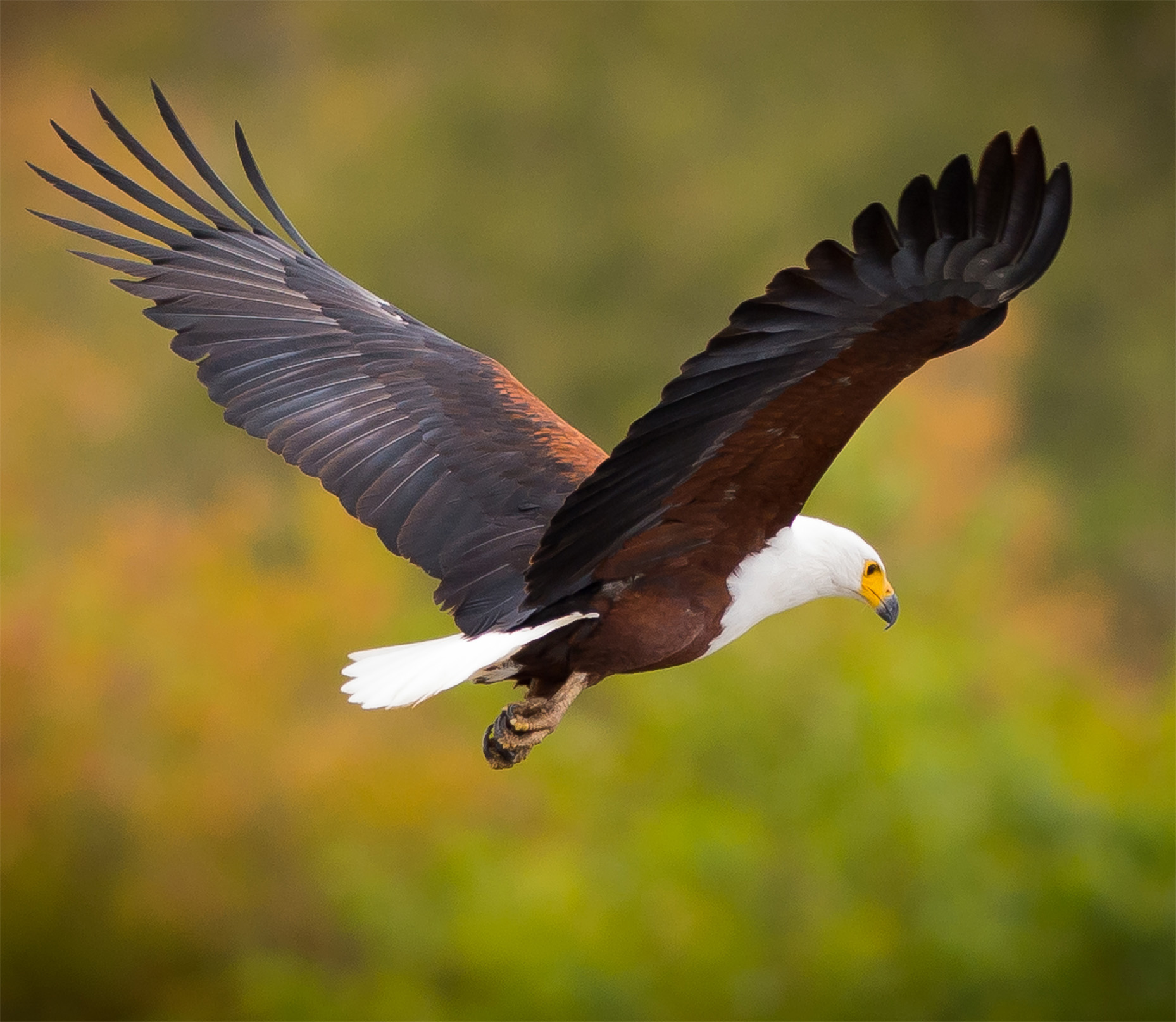
FIELD GUIDE Animal Directory
Jackal Buzzard (LC)
Species Buteo rufofuscus Relatives Yellow-Billed Kite, Chanting Goshawk, Harrier Hawk
Named for its jackal-like call, this medium to large raptor has a black back and head, a striking chestnut breast and a distinctive bright orange-red tail. Like other buzzards, it has long, broad wings, a relatively short tail and a stocky build. Probably the commonest large resident raptor in and around the uKhahlamba-Drakensberg, it is outnumbered by the duller migrant steppe buzzard in the northern winter.
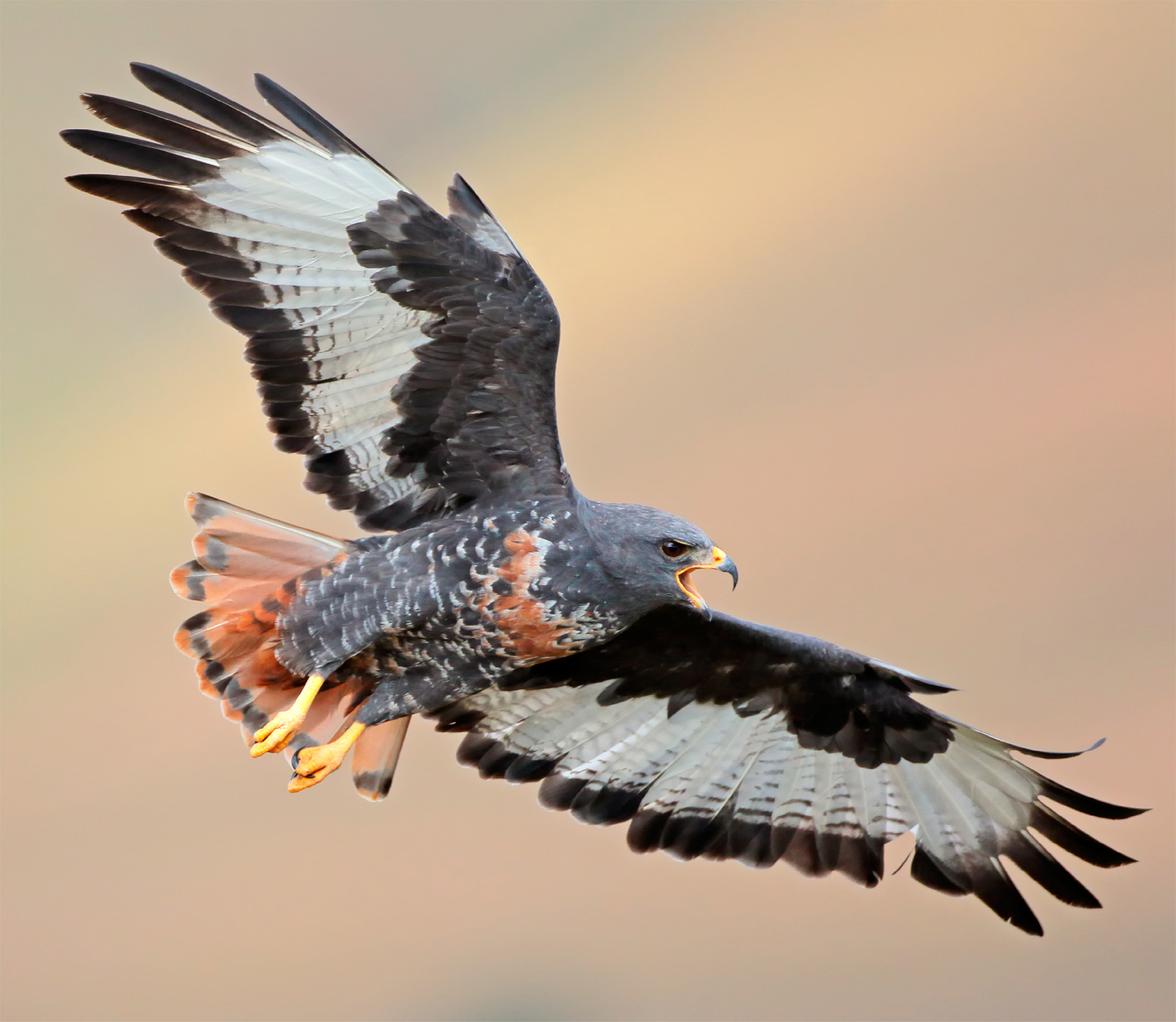
FIELD GUIDE Animal Directory
Verreaux’s Eagle-Owl (LC)
Species Bubo lacteus Relatives Barn Owl, Spotted Eagle-Owl, Scops Owl
Also known as the giant eagle-owl, Africa’s largest nocturnal bird is most often seen near the large acacia trees in which it likes to breed. It is identified by its black eyes with pinkish eyelids that it closes during diurnal rest, grey-brown feathering, crested ears and bold black facial disk marks. Usually unobtrusive, it is sometimes heard hooting at night. As with other owls, it is feared as a harbinger of death in many South African cultures.
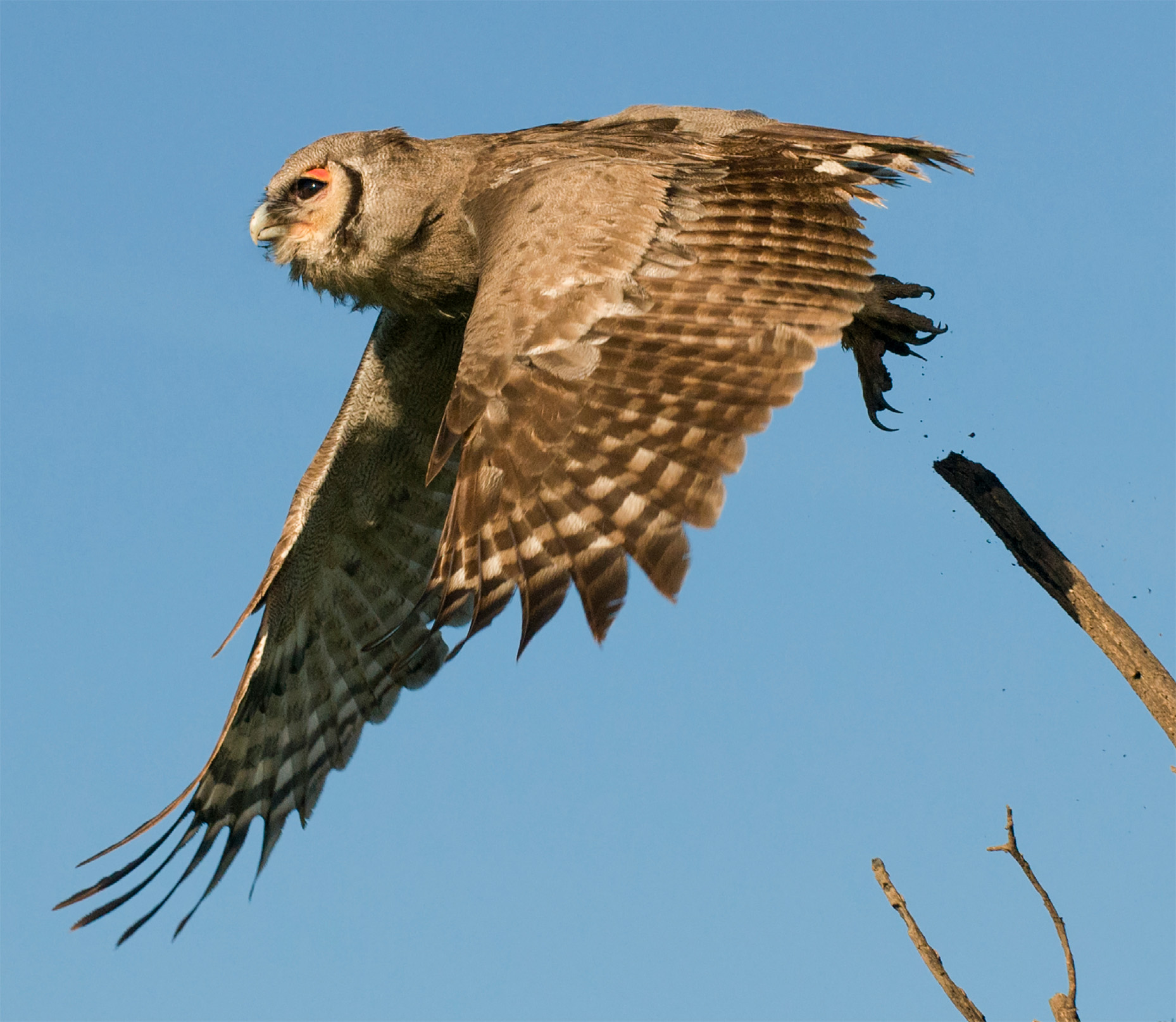
FIELD GUIDE Animal Directory
Secretary Bird (VU)
Species Sagittarius serpentarius Relatives No close relatives, affinities uncertain
A grassland bird with long skinny legs, a slender grey torso, long black tail and bare red face-mask, the 1.5-m- (5-ft-) tall secretary bird may have been named for its flaccid crest, which recalls the quills used by Victorian secretaries. Its name might also be a corruption of the Arabic saqr-et-tair (hunting bird). A terrestrial hunter, it feeds on snakes and lizards, which it stamps to death in a flailing dance ritual. It roosts in trees, but flies only when disturbed.
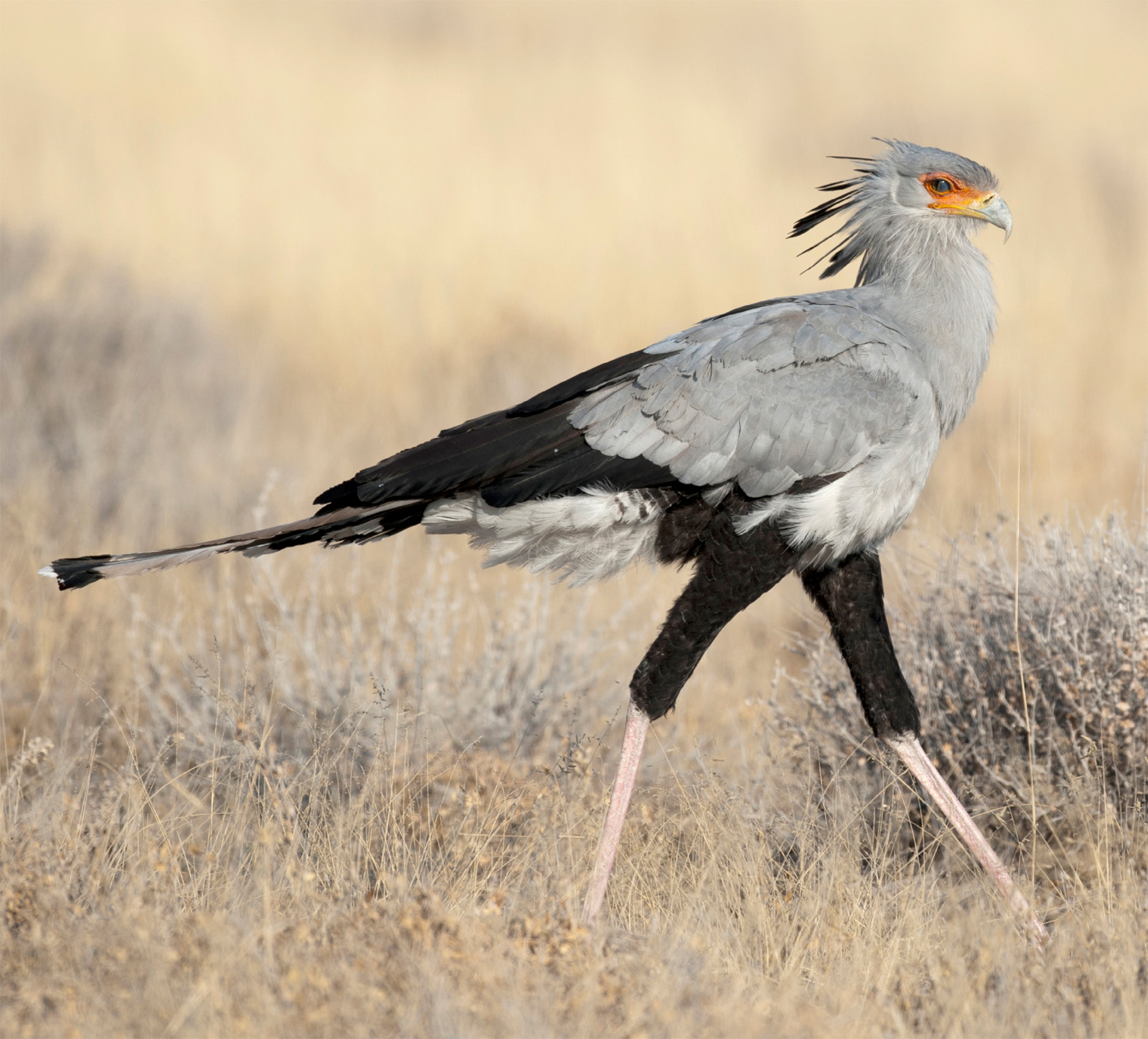
FIELD GUIDE Animal Directory
Southern Ground Hornbill (VU)
Species Bucorvus leadbeateri Relatives Trumpeter Hornbill, Silvery-Cheeked Hornbill, Crowned Hornbill
With black feathers, white underwings, large casqued bills, and red throat and eye wattles, ground hornbills are often seen marching along in small family parties in open habitats, probing the ground for insects. Despite their terrestrial habits, they are strong fliers. The southern ground hornbill is confined to the eastern part of the country, in particular the Kruger National Park and Sabi Sands.
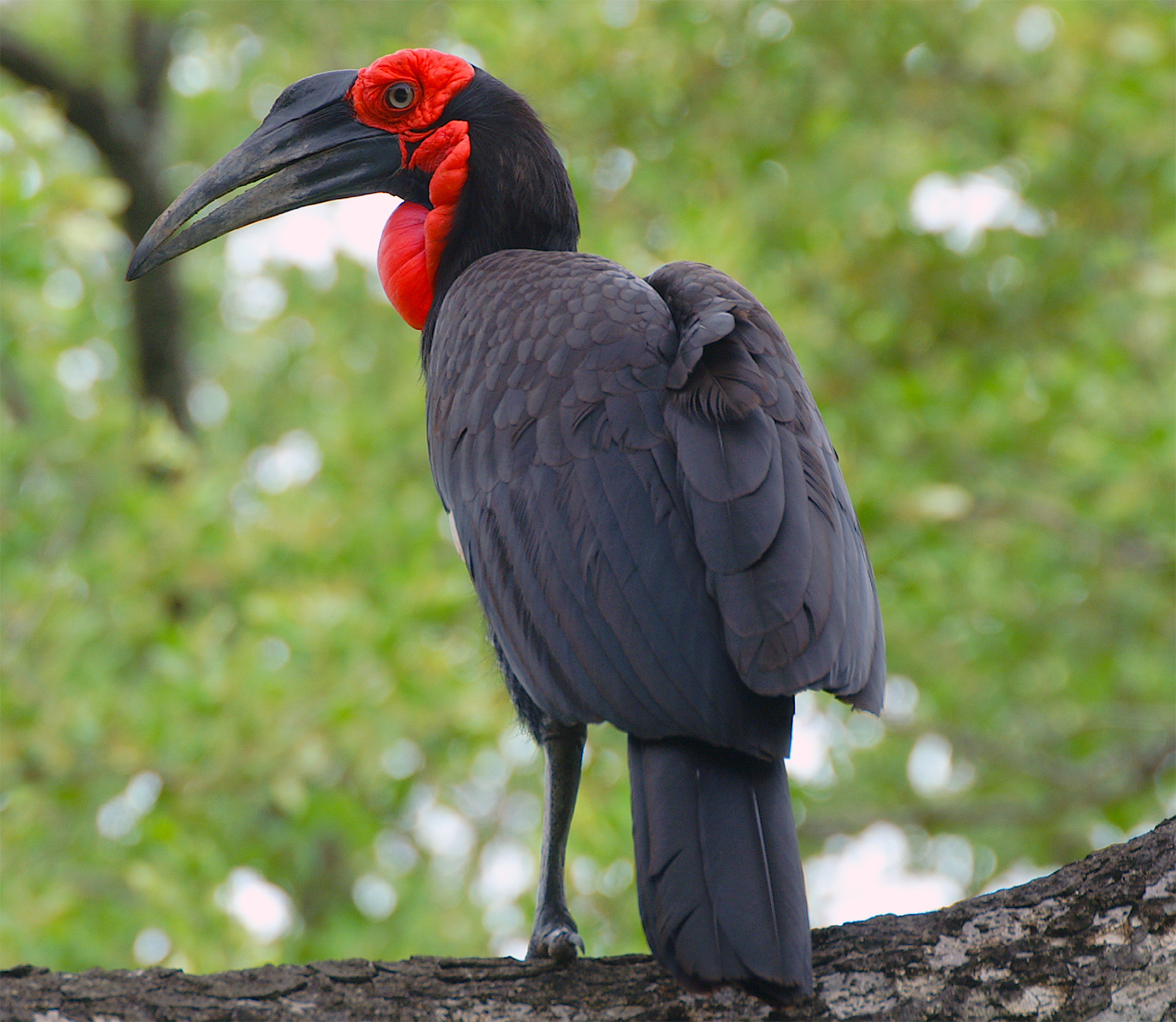
FIELD GUIDE Animal Directory
Common Ostrich (LC)
Species Struthio camelus Relatives No close relatives in South Africa
At a height of 2 m (7 ft 6 inches) and weighing more than 100 kg (220 lb), ostriches are the world’s largest birds. There are two species, but the common ostrich (which has pink legs, as opposed to the Somali ostrich’s blue legs) is the only one to occur in South Africa. A resident of protected grassland areas, the larger male has a handsome black-and-white plumage, while the female is duller. Ostriches are farmed for their feathers, eggs and low-cholesterol meat.

FIELD GUIDE Animal Directory
Kori Bustard (NT)
Species Ardeotis kori Relatives Stanley’s Bustard, Black-Bellied Korhaan, Black Korhaan
Bustards and korhaans are medium to large ground birds associated with open habitats. The most conspicuous species is the kori bustard, the world’s heaviest flying bird, weighing up to 12.5 kg (28 lb) and standing about 1.3 m (4 ft 3 inches) tall. Usually rather stately in demeanour, it performs a manic courtship dance, raising and fanning its tail and flapping its wings up and down in apparent agitation.
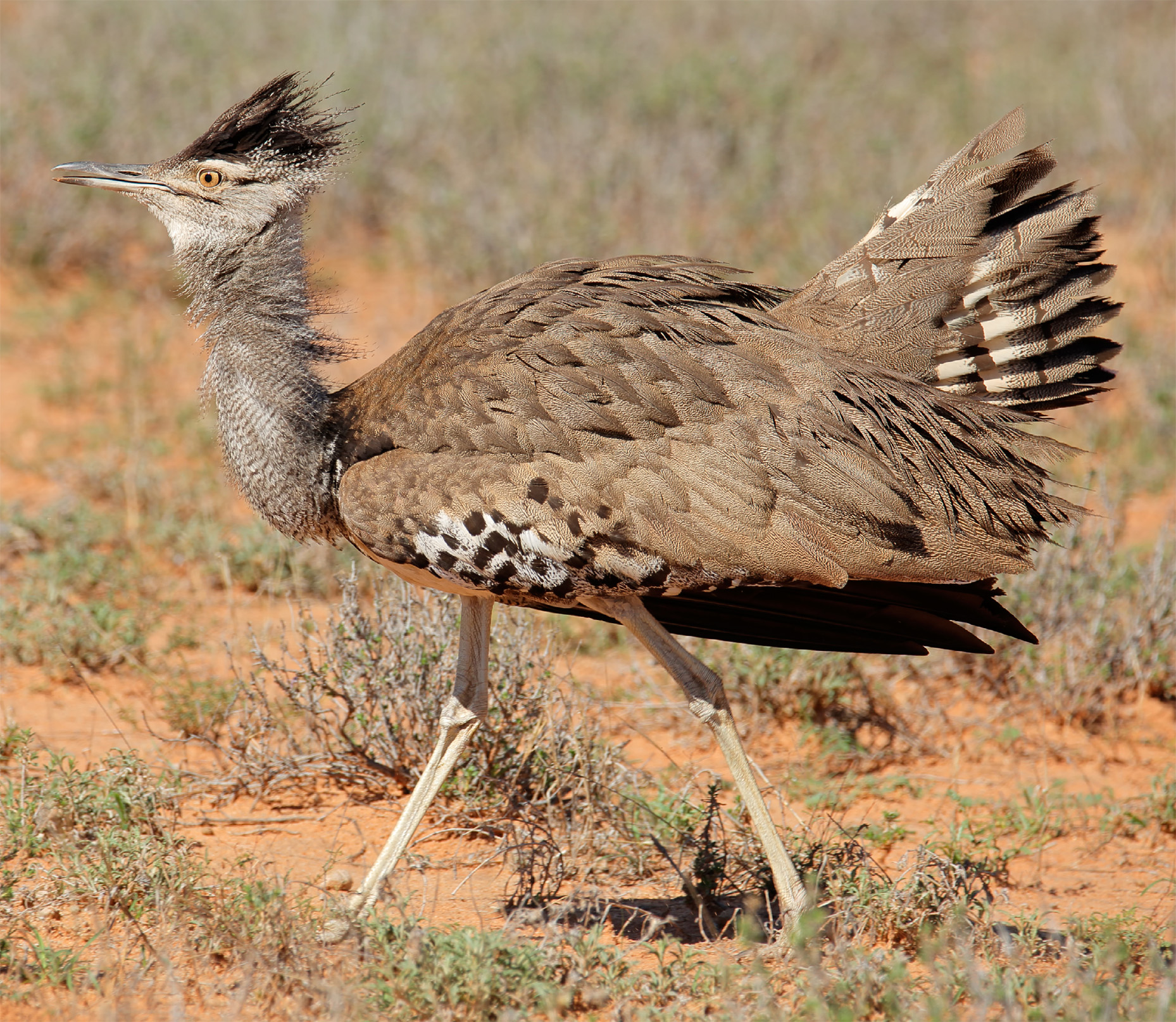
FIELD GUIDE Animal Directory
Helmeted Guineafowl (LC)
Species Numida meleagris Relatives Crested Guineafowl, Swainson’s Francolin, Coqui Francolin
Guineafowl are large, gregarious ground birds with spotted white-on-grey feathers and blue heads. The distinctive helmeted guineafowl is commonly seen everywhere from Kirstenbosch Botanical Garden to the Kruger National Park.

FIELD GUIDE Animal Directory
Yellow-Billed Hornbill (LC)
Species Tockus flavirostris Relatives African Grey Hornbill, Red-Billed Hornbill
Savannah hornbills are clownish birds with heavy, decurved bills. One of the more common species is the yellow-billed hornbill. Most nest in holes in tree trunks. During the incubation period, the female plasters the entrance to seal herself in and the male feeds her through a slit until the eggs hatch.
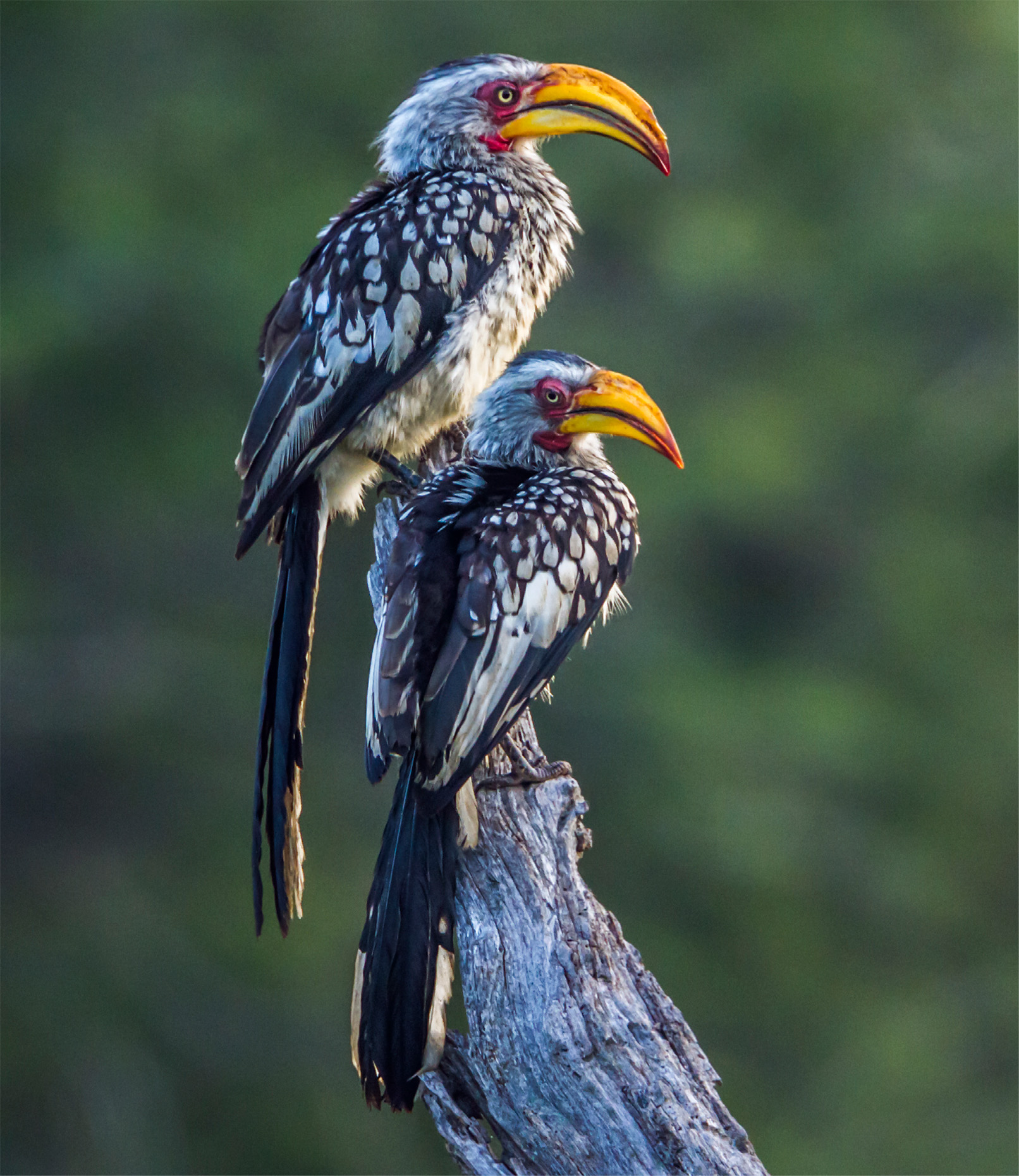
FIELD GUIDE Animal Directory
Hamerkop (LC)
Species Scopus umbretta Relatives No close relatives, affinities uncertain
The sole member of its family, the hamerkop is a rusty brown, rook-sized bird with a long, flattened bill and angular crest. This bird’s proverbially massive nest is normally constructed untidily over several months in a tree fork close to the water, and is made of litter, branches, mud, and other natural and artificial objects.
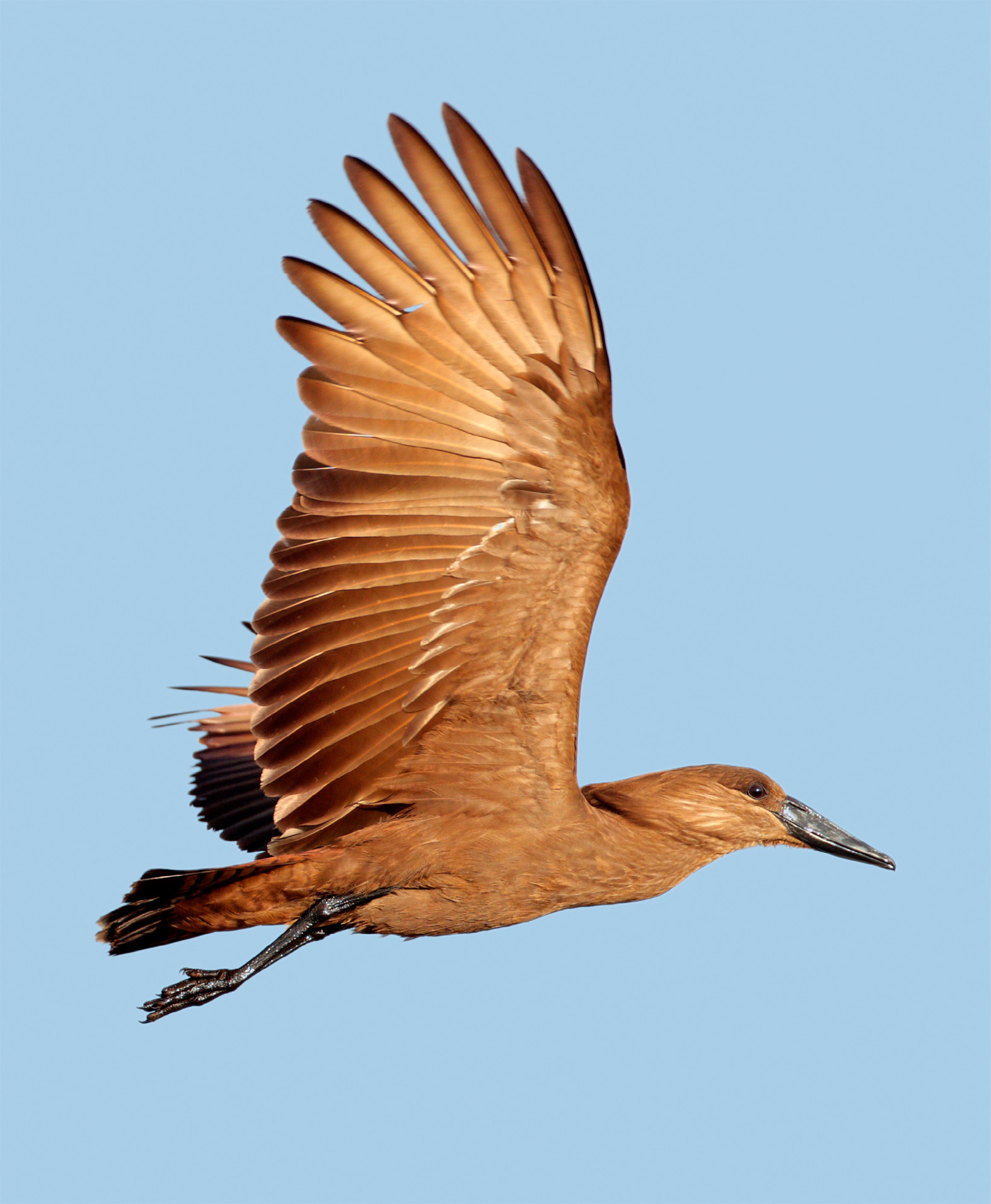
FIELD GUIDE Animal Directory
Cape Sugarbird (LC)
Species Promerops cafer Relatives Gurney’s Sugarbird
The larger of two species in the family Promeropidae, the Cape sugarbird is a striking nectar-eater with a sunbird-like bill, yellow vent and a tail that can be almost three times longer than the torso in the male. The similar but shorter-tailed Gurney’s sugarbird inhabits the uKhahlamba-Drakensberg and escarpment region.

FIELD GUIDE Animal Directory
African Jacana (LC)
Species Actophilornis africanus Relatives Blacksmith Plover, Pied Avocet, Crowned Plover
The African jacana is a waterbird associated with lily pads and other floating vegetation, on which it is able to walk, thanks to its far-spreading toes. An attractive bird, it has a rich chestnut torso and wings, white neck, black cap, and blue bill and frontal shield.
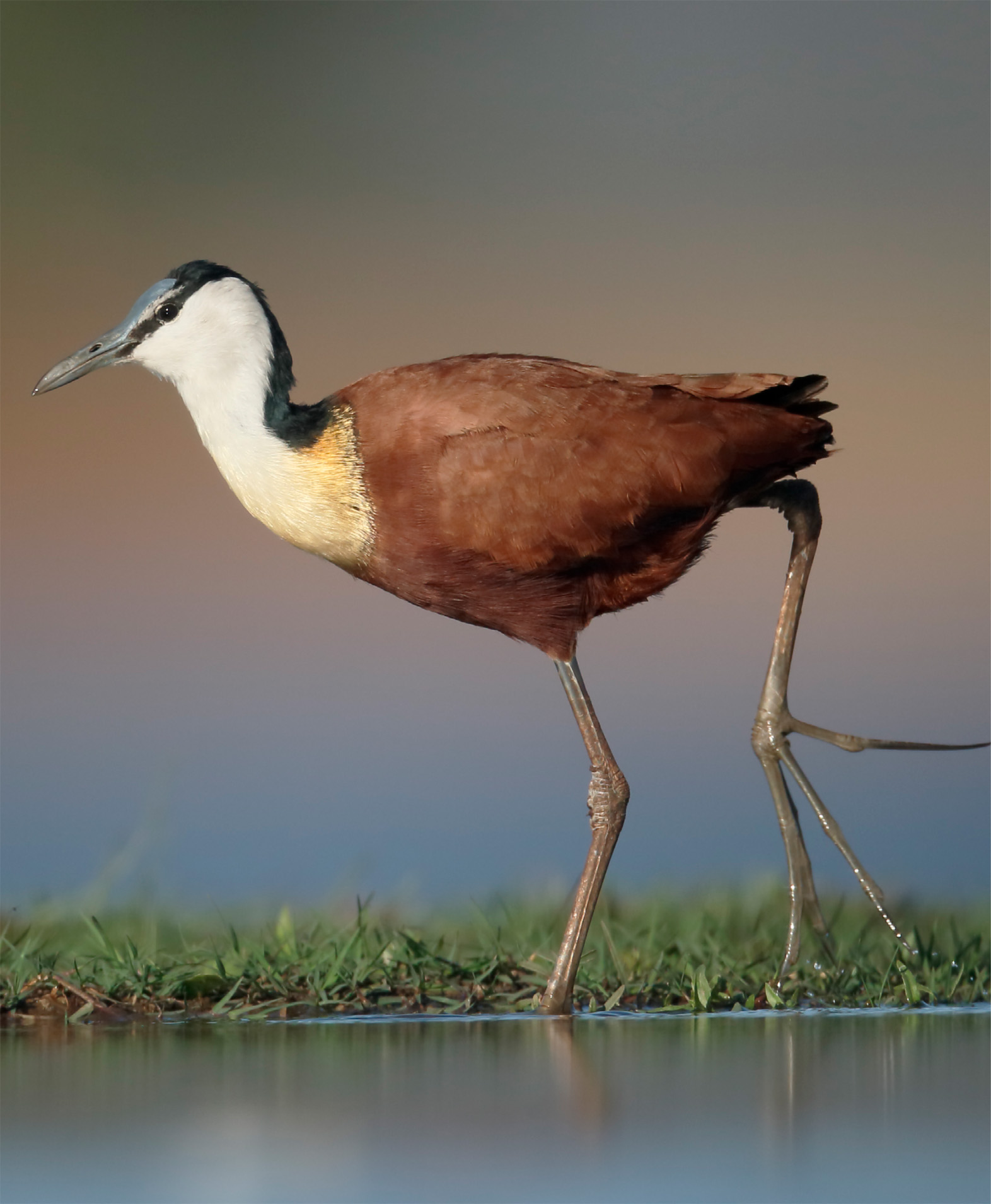
FIELD GUIDE Animal Directory
Common Hoopoe (LC)
Species Upupa epops Relatives Green Woodhoopoe, Common Scimitar-Bill
The common hoopoe is a handsome bird with orange, black and white coloration and a crest that is very striking when held erect. Seen singly or in pairs, it is most common in park-like habitats and hotel gardens, where it feeds on the lawn, poking around for insects with its long, curved bill.
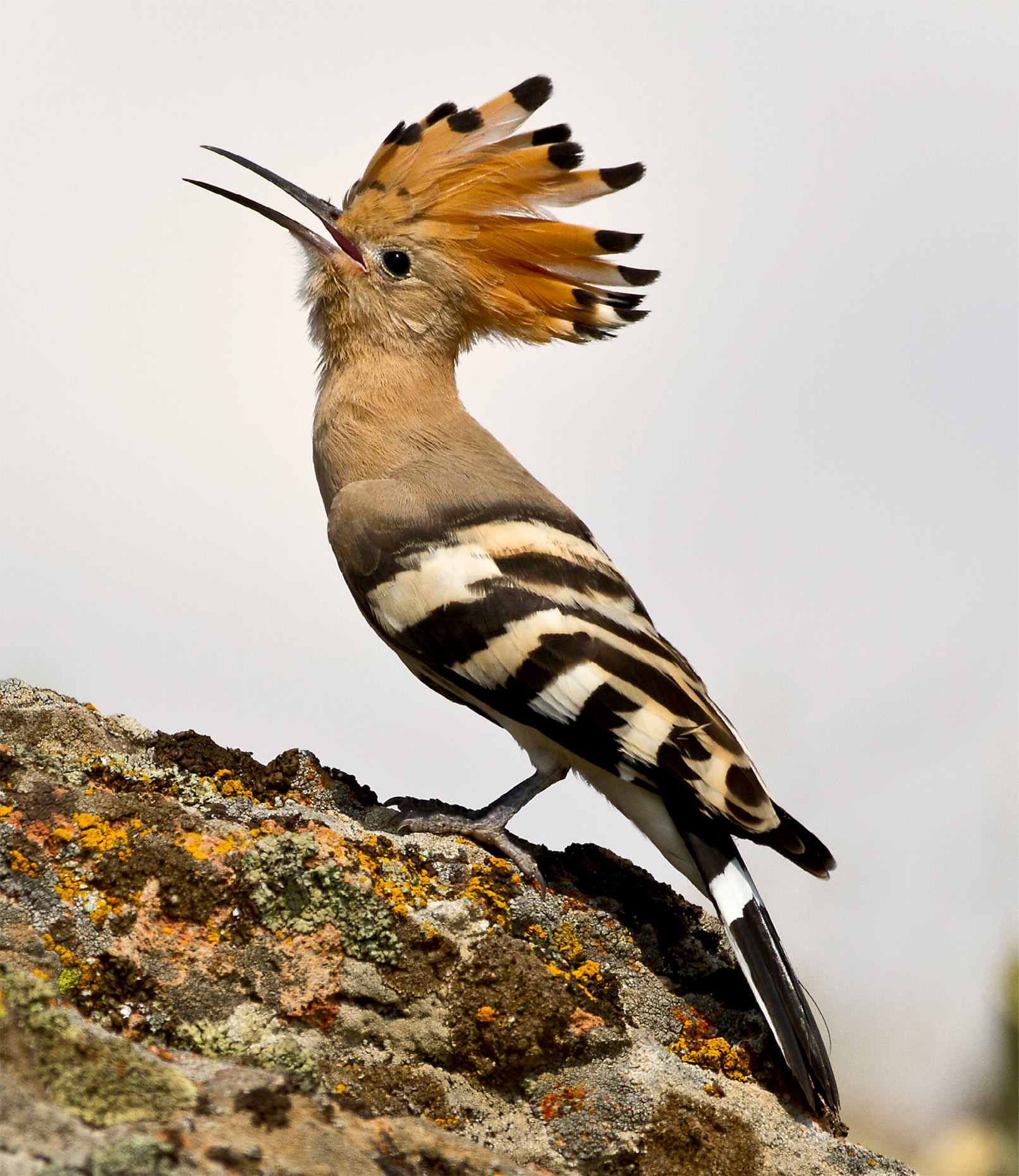
FIELD GUIDE Animal Directory
Grey Go-Away Bird (LC)
Species Corythaixoides concolor Relatives Knysna Loerie, Purple-Crested Loerie
Endemic to Africa, grey go-away birds (so named for their onomatopoeic call) and loeries are vocal frugivores with elongated bodies, long tails and prominent crests. The related knysna loerie inhabits eastern coastal and montane forests, while the purple-crested loerie is associated more with riparian woodland.

FIELD GUIDE Animal Directory
White-Fronted Bee-Eater (LC)
Species Merops bullockoides Relatives Little Bee-Eater, Southern Carmine Bee-Eater, Eurasian Bee-eater
A common resident of the Kruger National Park and other bushveld reserves, this bright-green bird has a red neck and chest, cobalt vent and white head with a black eye-stripe. Its sleek profile is determined by an upright stance, long wings and tail, and long, decurved bill.
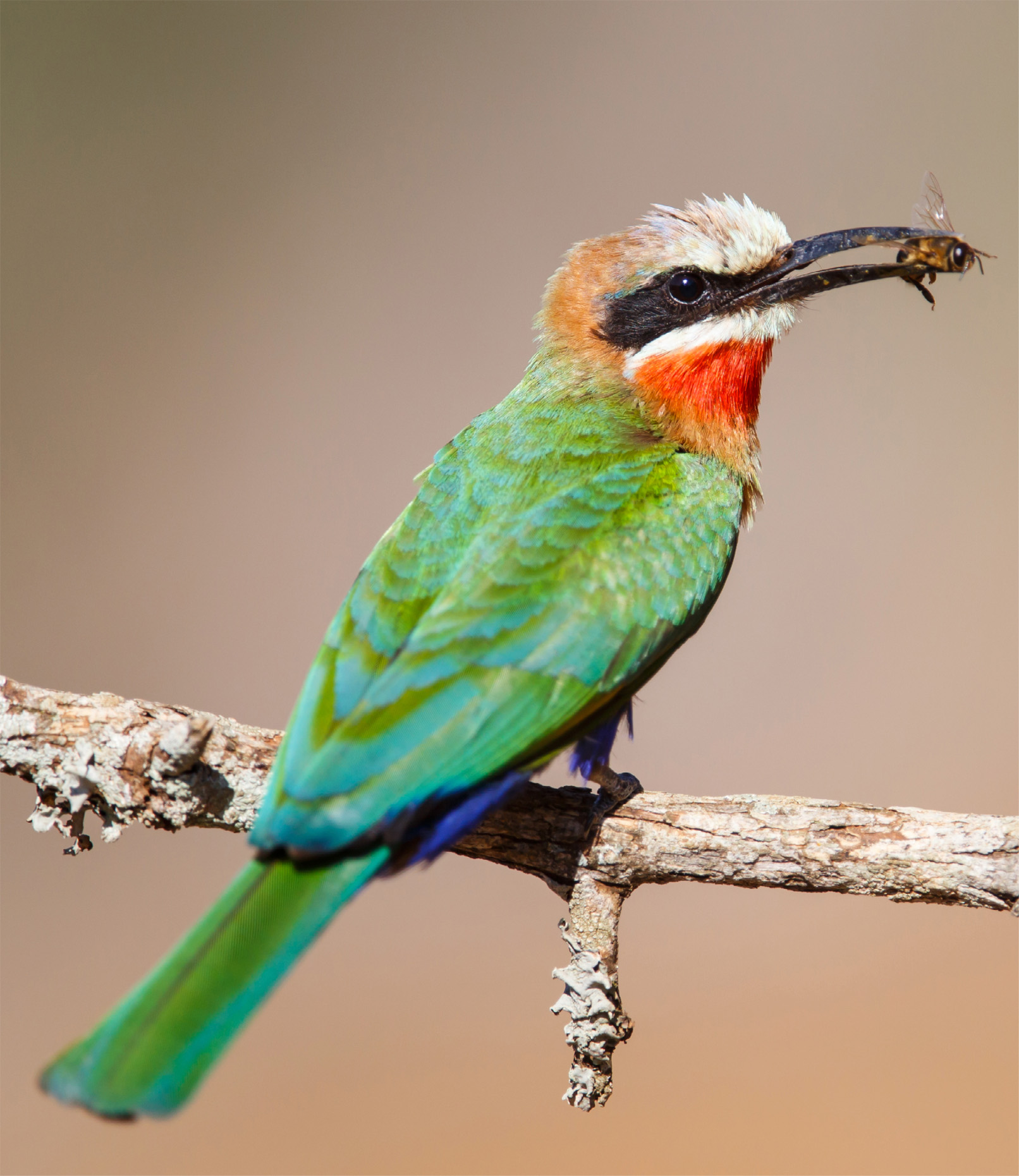
FIELD GUIDE Animal Directory
Lilac-Breasted Roller (LC)
Species Coracius caudata Relatives Broad-Billed Roller, Eurasian Roller, Racket-Tailed Roller
A jay-like bird with a lilac chest, sky-blue underparts and gold back, the lilac-breasted roller is often seen perching on an acacia branch. Four similar roller species occur in bush habitats in South Africa, all indulging in the agile aerial displays to which their name refers.

FIELD GUIDE Animal Directory
Fork-Tailed Drongo (LC)
Species Discrurus adsimilis Relatives Square-Tailed Drongo
A savannah and woodland passerine, the fork-tailed drongo is an insectivore that tends to hawk its prey from an open perch below the canopy. It is sometimes confused with black cuckoos, male black cuckoo-shrikes and black flycatchers, but none of these have the drongo’s comparably deep fork in their tail.

FIELD GUIDE Animal Directory
Long-Tailed Widowbird (LC)
Species Euplectes progne Relatives White-Winged Widow, Red Bishop, Golden Bishop
This black bird with red-and-white shoulder markings has an extraordinary long, droopy tail that gives it a total length of up to 80 cm (32 inches) during the breeding season. It is often seen from the roadside, flying low over reedy marshes and highveld grassland.
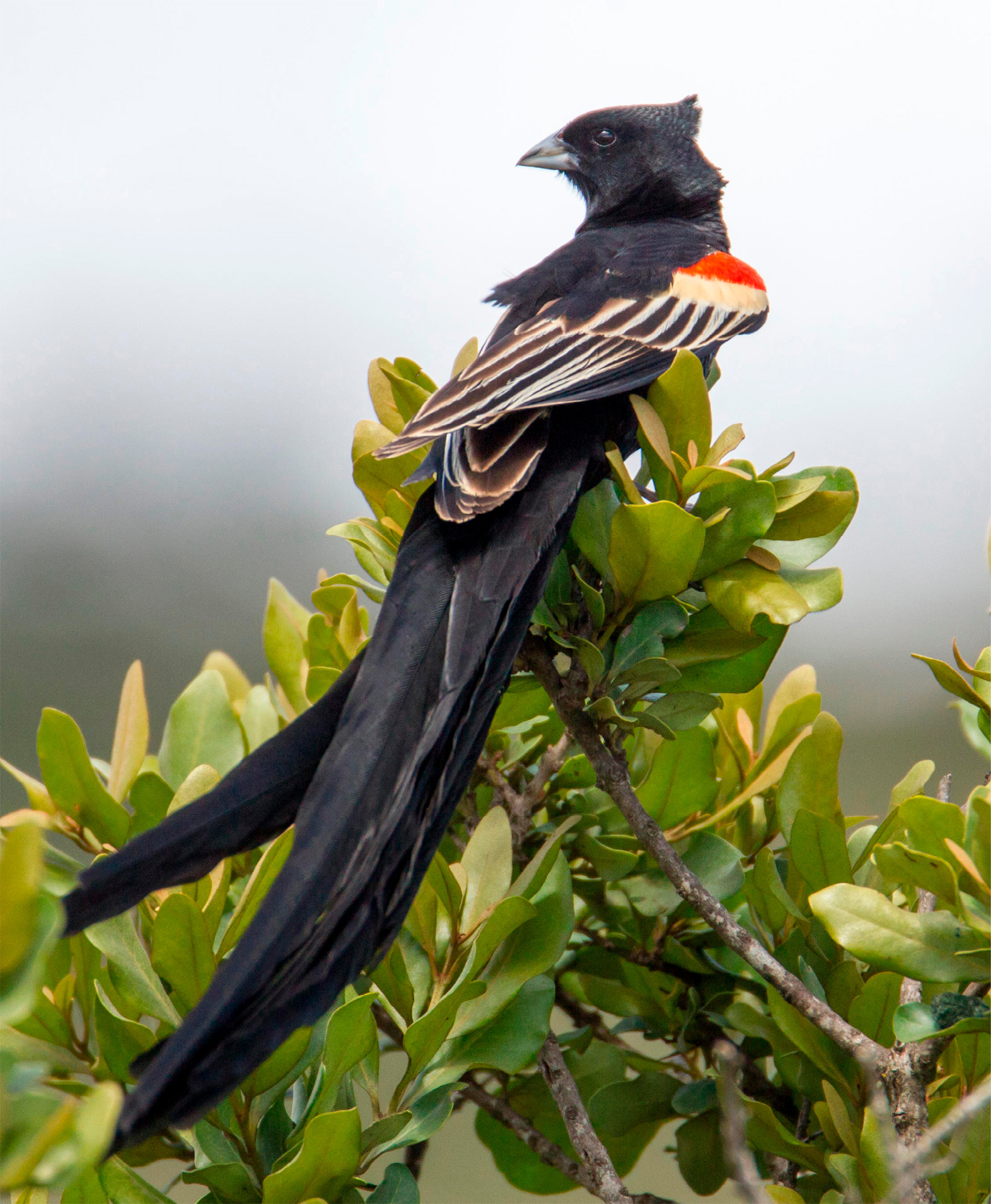
FIELD GUIDE Animal Directory
White-Browed Coucal (LC)
Species Centropus superciliosus Relatives Red-Chested Cuckoo, Yellowbill, Diederick’s Cuckoo
The white-browed coucal is a large, clumsy bird seen in rank grassland, marsh and lake margins. It has a white eye-stripe and streaked underparts. It is most visible before rainstorms, which it tends to predict with a dove-like bubbling.
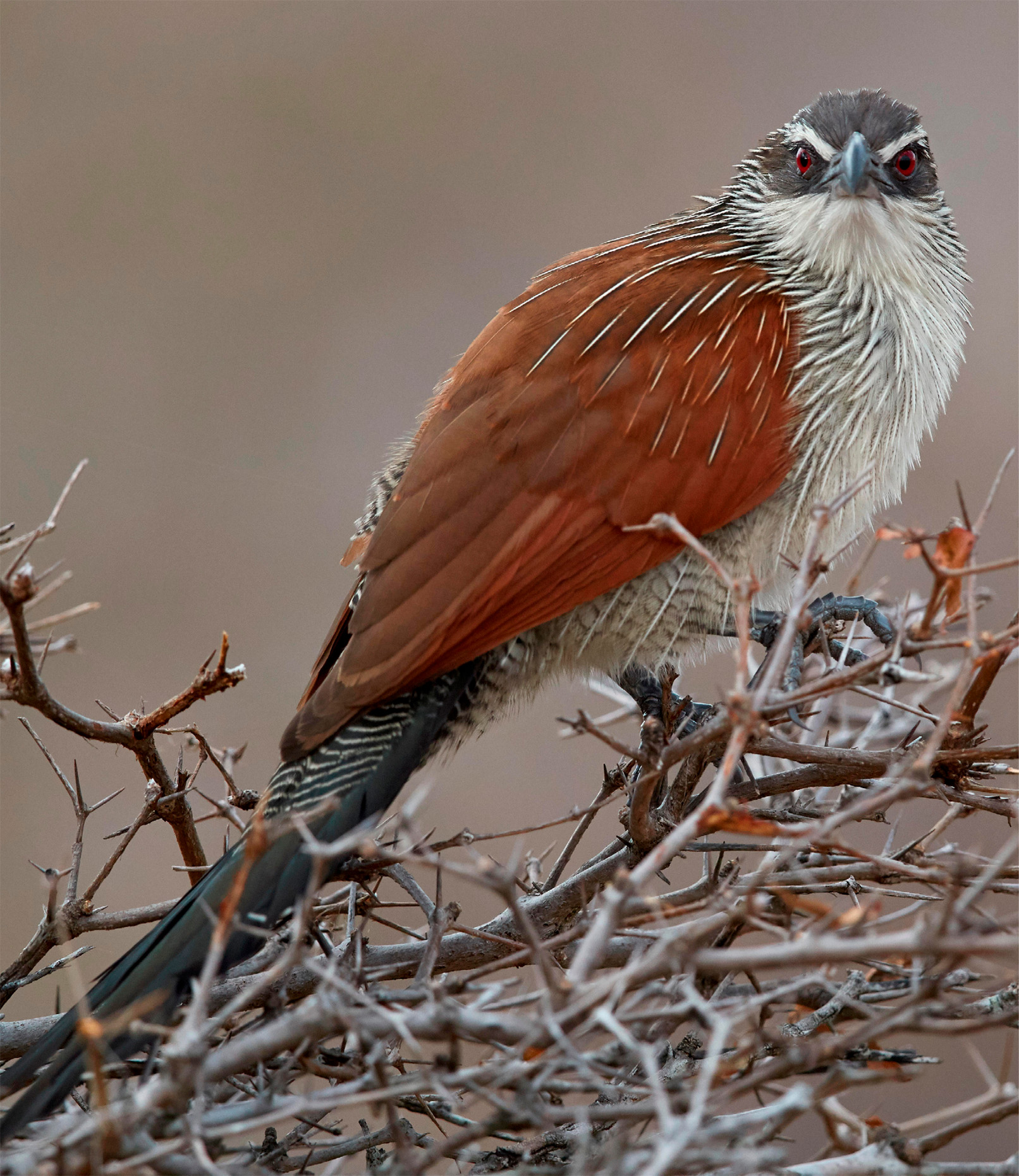
FIELD GUIDE Animal Directory
African Firefinch (LC)
Species Lagonosticta rubricata Relatives Common Waxbill, Pin-Tailed Wydah, Blue Waxbill
Bright red with light spotting on the flanks, this ubiquitous but unobtrusive small bird frequents gardens and lodge grounds. It is one of several small, colourful seed-eaters in the family Estrildidae, most of which have conical bills whose waxen sheen gives them the common name of waxbill.
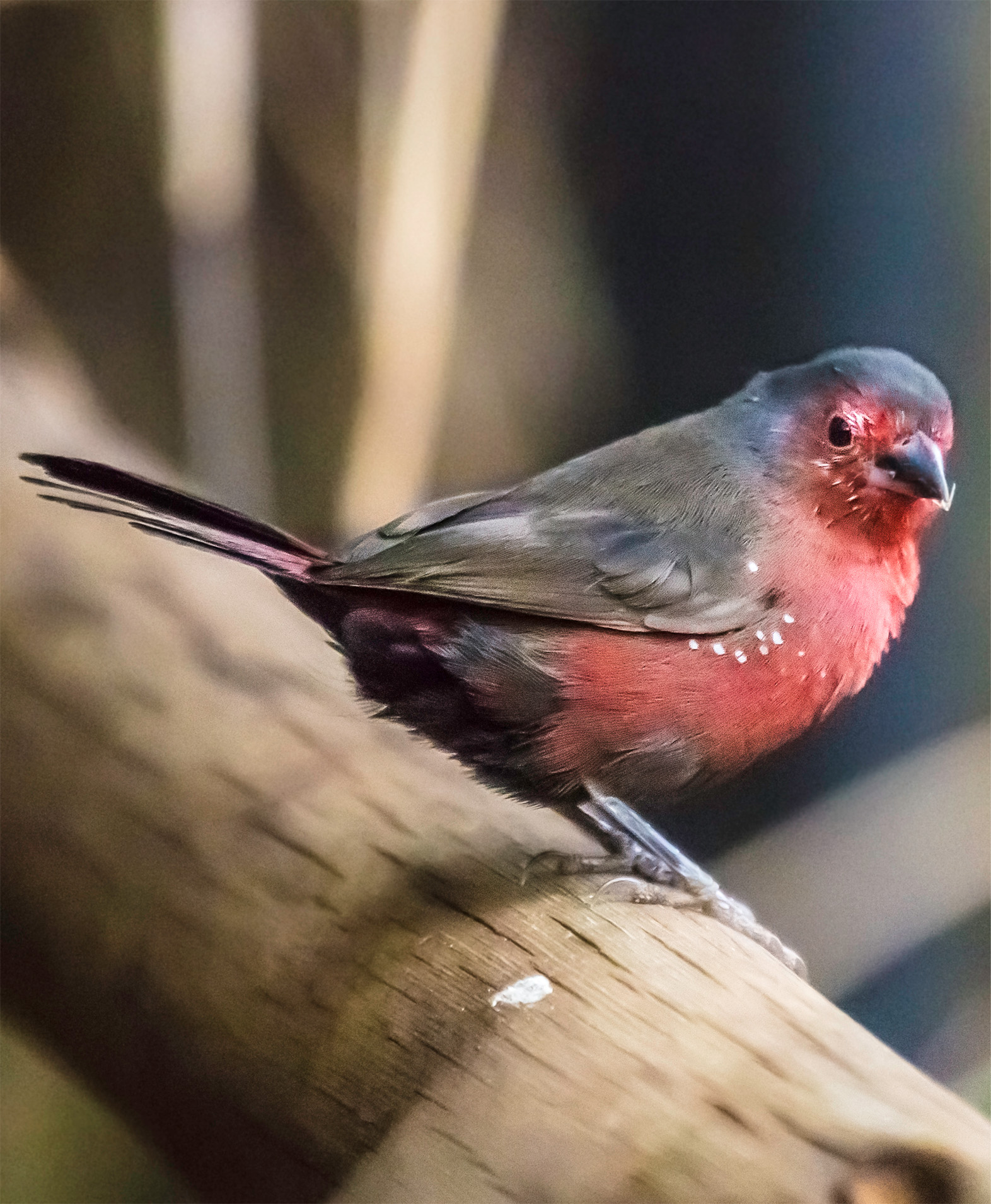
FIELD GUIDE Animal Directory
Lesser Masked Weaver (LC)
Species Ploceus intermedius Relatives Red-Billed Quelea, Spotted-Backed Weaver, White-Browed Sparrow-Weaver
The lesser masked weaver is probably the commonest species in South Africa. The male builds an intricate, ball-shaped nest at the end of a thin hanging branch, which is inspected by the female, who deconstructs it ruthlessly if she deems it unsatisfactory.
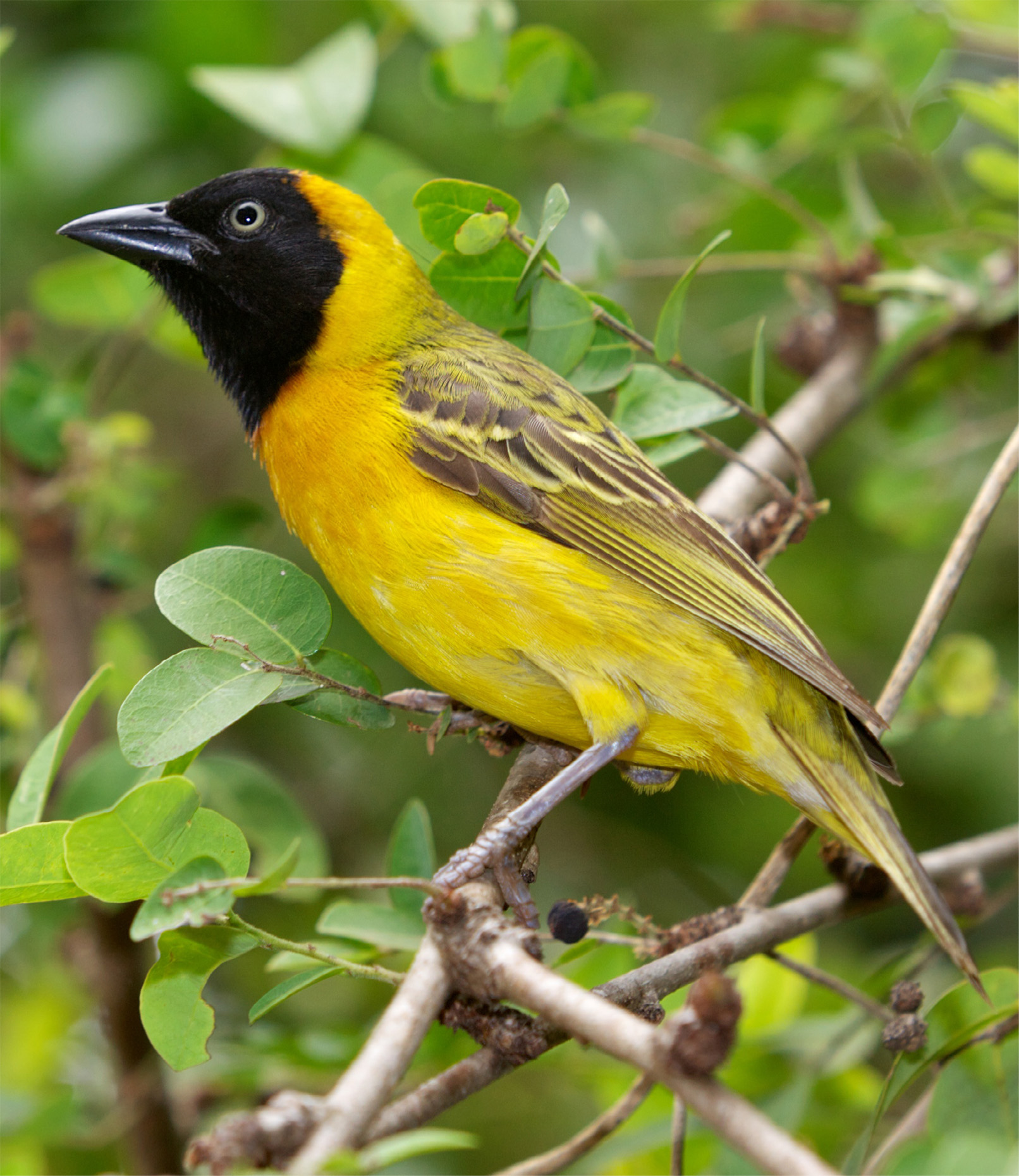
FIELD GUIDE Animal Directory
Common Bulbul (LC)
Species Pycnonotus barbatus Relatives Cape Bulbul, Red-Eyed Bulbul, Spotted Nicator
The common bulbul is one of the most prevalent birds in the northeast. Its counterparts in the southwest and northwest respectively are the Cape bulbul, with white eyes, and the red-eyed bulbul. All three are cheerful, habitat-tolerant garden birds with a bright tuneful song, slight crest and yellow vent.

FIELD GUIDE Animal Directory
Cape Wagtail (LC)
Species Motacilla capensis Relatives African Pied Wagtail, Long-Tailed Wagtail, Orange-Throated Longclaw
Frequently seen at the edge of rivers, lakes and swimming pools, the boldly marked grey-and-white Cape wagtail is the most common and widespread wagtail in South Africa. It is outnumbered in the northeast by the African pied wagtail and seasonally in some areas by the migrant yellow wagtail.

FIELD GUIDE Animal Directory
Malachite Sunbird (LC)
Species Nectarinia famosa Relatives Collared Sunbird, Scarlet-Chested Sunbird, Orange-Breasted Sunbird
Sunbirds are small nectar-eaters with long, decurved bills. In most species, the females are less conspicuous than the iridescent males. The widespread malachite sunbird, long-tailed and metallic green in colour, is arguably the most beautiful, and is associated with aloes and other flowering shrubs.

FIELD GUIDE Animal Directory
Speckled Mousebird (LC)
Species Colius striatus Relatives White-Backed Mousebird, Red-Faced Mousebird
This scruffy frugivore is the most widespread member of the order Coliidae, which is endemic to Africa and consists of half-a-dozen species. It is generally seen in flocks of around five to eight birds. The name mousebird may refer to its habit of shuffling nimbly along branches.

FIELD GUIDE Animal Directory
Olive Thrush (LC)
Species Turdus olivaceous Relatives Cape Robin-Chat, Common Rock Thrush, Stonechat
The Turdidae is a family of medium to small insectivores, which is represented by about 40 species in South Africa. Among the most recognizable is the olive thrush, often seen hopping around hotel lawns. The family also includes robin-chats, a group of orange, blue, black and white birds that are also common in gardens.
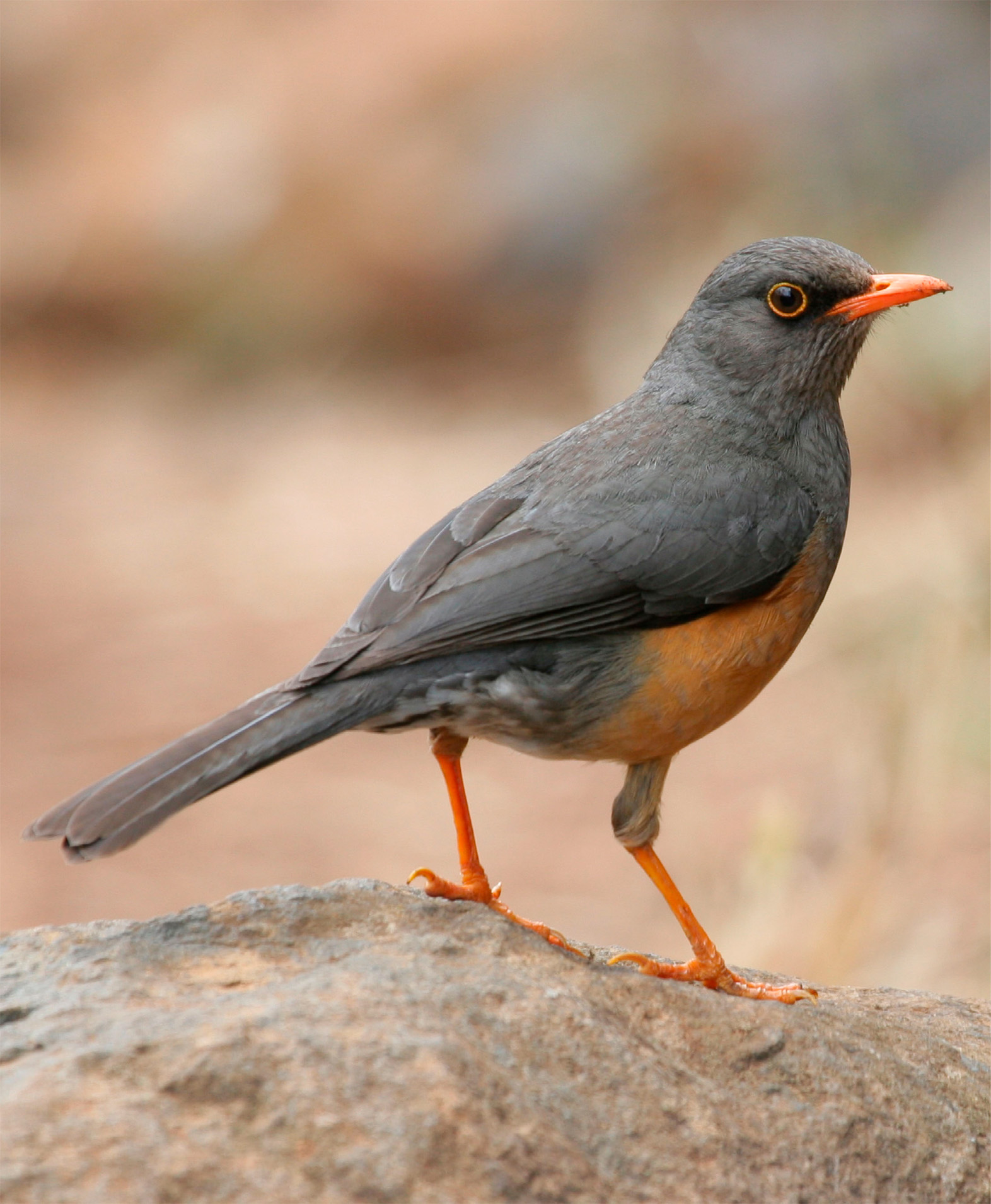
FIELD GUIDE Animal Directory
Crested Barbet(LC)
Species Trachyphonus vaillantii Relatives Black-Collared Barbet, Red-Fronted Tinker-Barbet, Cardinal Woodpecker
The repetitive trilling of the crested barbet is one of the most distinctive sounds in Kruger National Park. The bird is mainly yellow, with a black-and-white back and bib, and red streaking on the face and belly. The black-collared barbet has a red head and performs a haunting whirring duet.
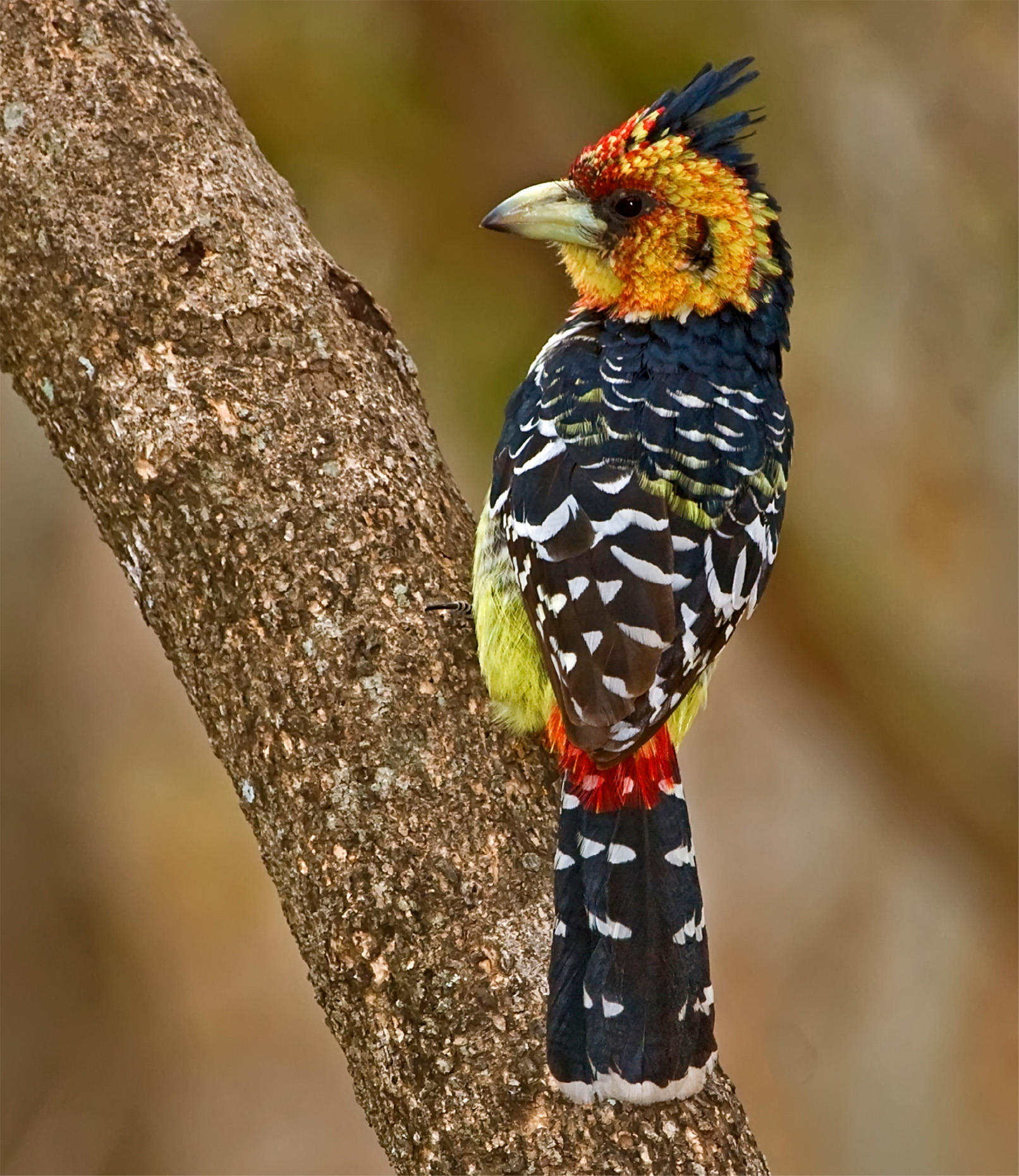
FIELD GUIDE Animal Directory
African Paradise (LC) Flycatcher
Species Terpsiphone viridis Relatives Vanga Flycatcher, Chin Spot Batis, Common Wattle-Eye
This leaf-gleaning flycatcher might be seen anywhere, although local abundance is affected by complex seasonal intra-African movements. Usually bluish with an orange tail, it also has black-and-white and intermediate morphs. The male’s tail can be up to three times its body length.

FIELD GUIDE Animal Directory
Cape Glossy Starling (LC)
Species Lamprotornis nitens Relatives Red-Winged Starling, Plum-Coloured Starling, Red-Billed Oxpecker
With glossy green-blue feathering, red eyes and a faint black eye-stripe, this is the most widespread and visible of several beautiful South African starlings. Even more stunning is the plum-coloured starling, which occurs in riverine woodland and acacia bush.
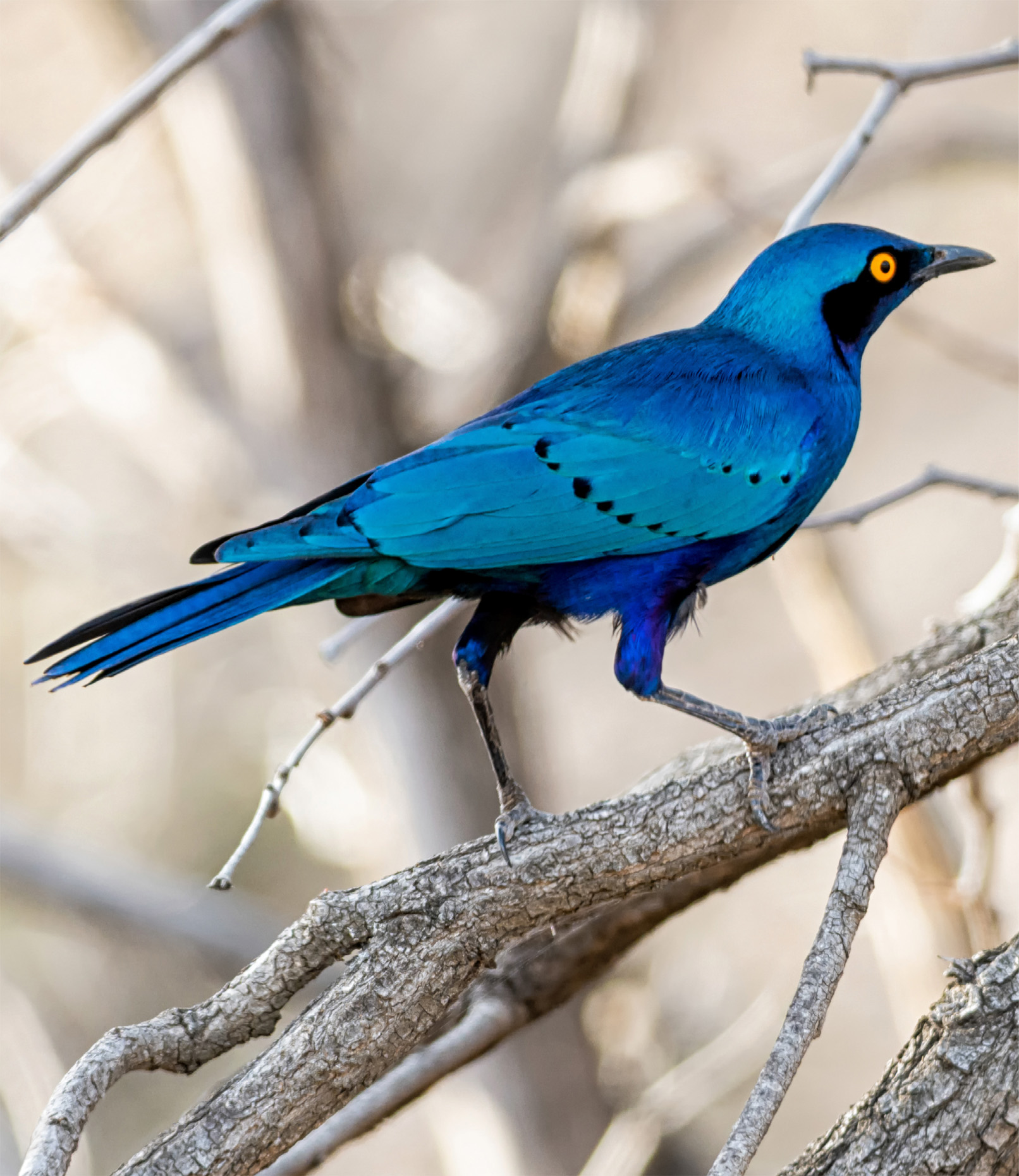
FIELD GUIDE Animal Directory
Pied Kingfisher (LC)
Species Ceryle rudis Relatives Malachite Kingfisher, Giant Kingfisher
Probably the most visible of South Africa’s water-associated kingfishers, this black-and-white bird hunts by hovering above open water then diving down sharply to spear a fish with its dagger-like bill. Other water-associated species include the finch-sized malachite kingfisher and the giant kingfisher.
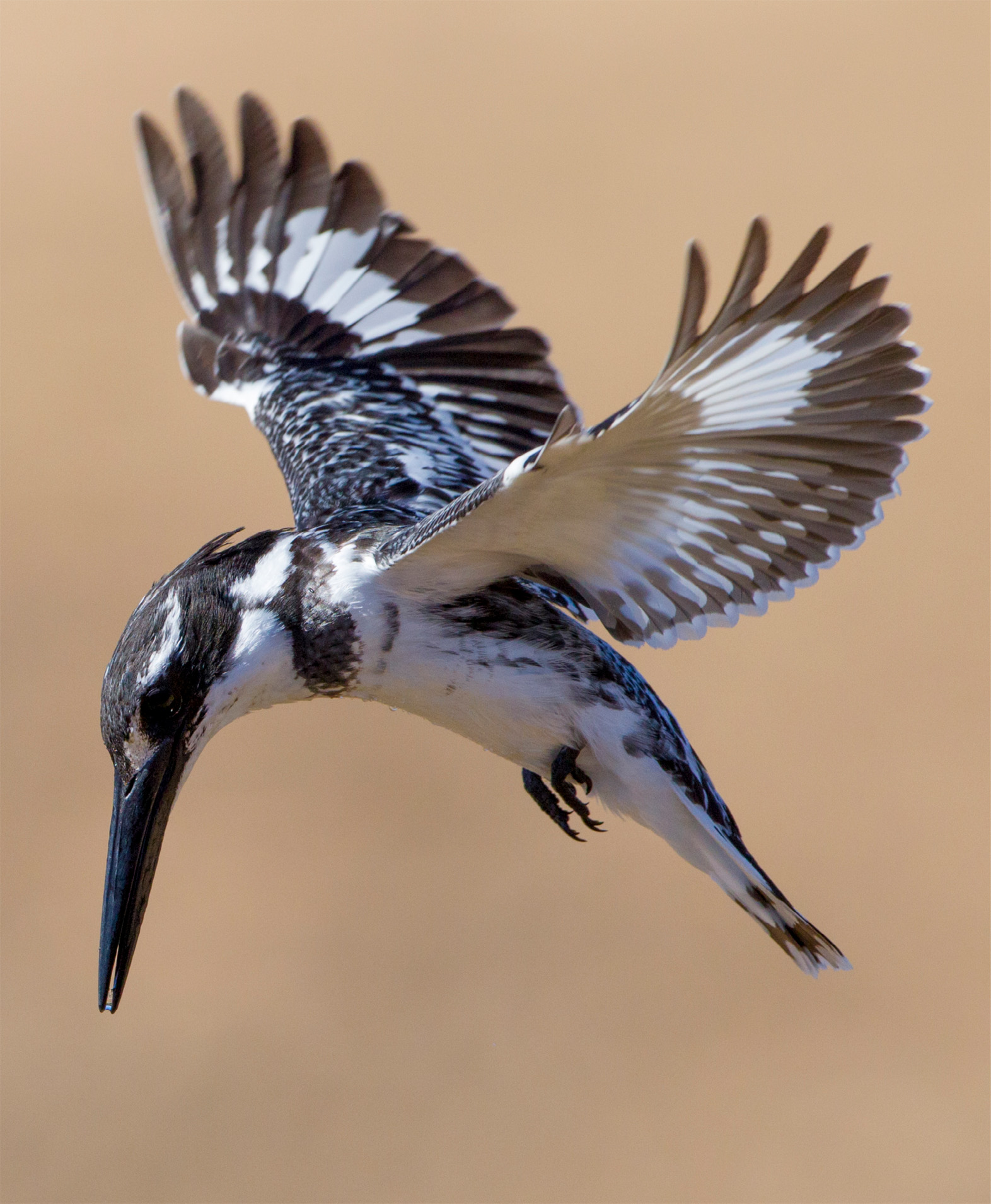
FIELD GUIDE Animal Directory
Common Fiscal (LC)
Species Lanius collaris Relatives Long-Tailed Shrike, Crimson-Breasted Shrike, Southern Boubou
This handsome resident of the highveld, usually seen perching on acacia trees or fences, is sometimes referred to as the butcher-bird, for its habit of impaling its prey on thorns or barbs to eat later. The related southern boubou and spectacular crimson-breasted shrike are more furtive bush-shrikes.

